

Warning Signs for a Mini-Stroke
A TIA (Transient Ischemic Attack) is a temporary blockage of blood flow to the brain. It doesn’t cause permanent damage, but it’s a serious warning sign.
A TIA is a warning shot. About 1 in 3 people who have a TIA will go on to have a stroke — often within days or weeks. Early intervention can help prevent a full stroke with medications or surgery.
ACT FAST

1 Recognize the Signs – Use BE FAST
Balance
Sudden loss of balance or coordination
Eyes Sudden blurred, double, or lost vision
Face One side droops when smiling or numbness
Arms One arm drifts down when both arms are raised
Speech Slurred, confused, or hard-to-understand speech
Time Time to call emergency services immediately
2 Take Action
These symptoms usually last less than 24 hours—often just a few minutes—but require immediate medical attention.
Call Emergency Services Immediately (e.g., 111 in NZ, 911 in the U.S.)
Note the time symptoms began (important for doctors)
Stay where you are and stay calm
Do NOT drive yourself – wait for an ambulance
If with someone: keep them sitting or lying down safely
3 Medical Follow-up after emergency care
Schedule a follow-up with your GP or neurologist
Review or begin medications (e.g., blood thinners, cholesterol meds)
Get tests (brain imaging, heart monitor, carotid ultrasound)
Make lifestyle changes (quit smoking, eat healthy, stay active)
Keep a stroke/TIA logbook with symptoms and medical visits

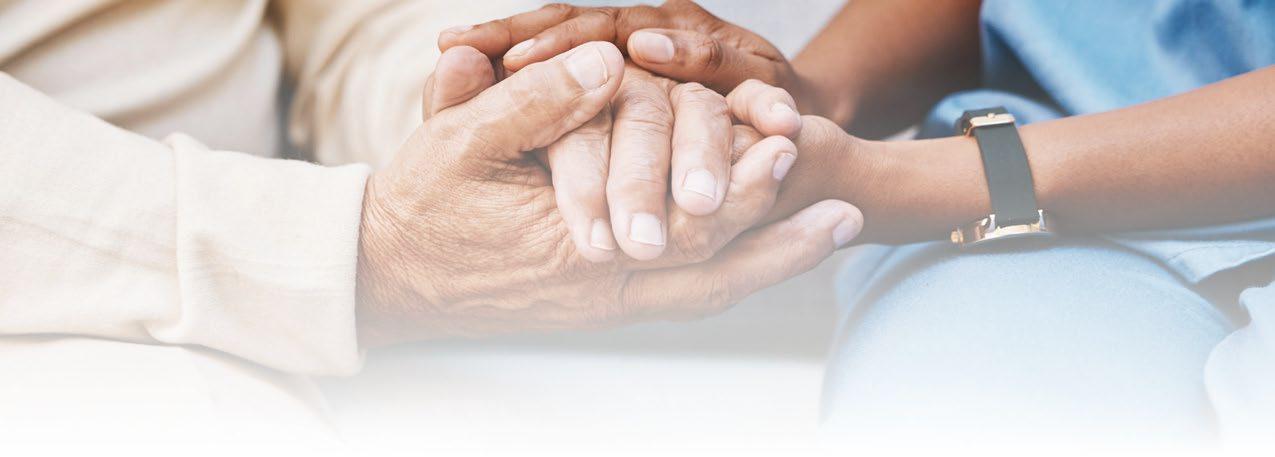







WELCOME TO COMPASS & CLOCK
For years, Compass & Clock has provided practical advice for future planning. Yet, in this space, I don’t think I’ve discussed how aging feels. That deeply personal, yet universal, experience of those that get to live to an old age.
There will come a time, if it hasn’t already, when you look in the mirror and see a face you don’t recognize. You’ll be startled to realize that the face the world sees, your actual self, does not at all match how you feel. That version of you that you hold in your mind; how you think the world should see you. It can be quite disconcerting. It may lead to feelings of loss and hopelessness, uselessness, and a diminishment of self-esteem. All exacerbated by society’s ageism.
To truly enjoy your senior years, you cannot remain stuck in wishing for what was. It is to your great benefit to genuinely acknowledge that aging is inevitable and can be rewarding. Acceptance may allow you to focus on what you can do, and lead to growth. Growth and introspection may take you down an entirely new path in your third act. Once unburdened by the expectations and frivolity of youth, who knows what feats you may face, what accomplishments you might celebrate. And that feels pretty great.
The National Institutes for Health have found that when older adults engage in activities that they enjoy they live longer, fuller, happier lives. Until you face physical limitations or cognitive impairment, there’s no reason to stop doing what you love. Make the effort to acquire new skills and knowledge for a healthy brain.
You can read more about positive aging with Gary Floring's article, 'Positive Aging Mindset' on page 10. Ideally, aging well begins when we’re young. Proper diet, physical activity, continuing education, and nurturing relationships are healthy habits for a lifetime. They’re especially important as we age to keep us strong and well enough to remain independent. Even if your habits are less than healthy, it’s not too late to turn that around.
In fact, if you haven’t yet begun future-planning, it’s not too late to start that as well. No matter what your age, finances, or health status, Compass & Clock is here to help you with:
• Healthcare
• Housing Choices
• Legal Guidance
• Financial Planning
• Leisure Pursuits
• Family Support
Visit our website at www.compassandclock.com to choose how you receive the future planning information we offer: subscribe to our YouTube channel, podcast, and newsletter, or sign up for home delivery.


Mary Coupland Publisher/Editor-in-Chief
Founder, Owner, and CEO, Compass & Clock
Member of NAIPC WA Chapter (National Aging in Place Council)
Member of BKAT, Bremerton Kitsap Access Television
Road Ahead education series available on Comcast Channel 12 & Wave Channel 3, Thursday mornings, 10-10:30am in Kitsap County
Member of Kitsap Provider Group
Member of the Sequim-Dungeness Valley Chamber of Commerce
Past Board Member Peninsula Services
Past President, Board of Directors, Mavericks Bainbridge
Past Board Member, Bainbridge HS Baseball Boosters
206-627-0790
compassandclockmc@gmail.com www.compassandclock.com

Proud Sponsor of Compass & Clock
Compass & Clock is a proud sponsor of




Cover Photo
Gibbston Valley Music Festival, New Zealand

Sticker Shock!
Have You Been To The Grocery Store?
By Mike Adams
Can you believe the prices? Can you believe the Fed and the government are saying that inflation has moderated? Do any of them shop at the grocery store? Are they on an expense account when they dine in restaurants, so they do not see the price increases?
Prices are up and the chances are they are going to continue to increase.
We are still in the early stages of inflation. It is truly time to be prepared!
By the end of the 1970s it took three times the number of dollars to purchase the same goods as it did in 1965. By 1992 it was probably six times. This time could be worse.
We don’t have specific government data showing the inflation due to tariffs. But there is plenty of allegorical data. The Business Insider reports this:
“Walmart employees have been sharing photos recently on the Walmart subreddit showing sharp price increases of as
much as 45 percent at the retail giant. Some of the items have also seen price increases at the rival retailer Target.
“In one example, a Walmart label shows the price of a Jurassic World T. Rex toy jumping from $39.92 on April 27 to $55 on May 21, an increase of nearly 38 percent.
“A third-party website that tracks Walmart prices, AisleGopher, shows the price was $29.74 back in November.”1
If you have been to the grocery store you have seen the price of eggs up 40 percent, tomatoes up 21 percent and beef up 10 percent. That may just be the beginning. US farmers in Florida and California are plowing under tomatoes since there is a shortage of labor. The same is true of apples and cherries in the state of Washington.
While history does not repeat, it often rhymes. Looking back to the high inflation times of the 1960s and 1970s gives some insight into what may be coming in the next decade.
Most people think of the oil crisis as what spurred inflation
Laura James
in that time period. But inflation began before that. Lynden Johnson’s administration poured government money into the economy to finance the Vietnam War and the Great Society (Medicare, Medicaid, Elementary and Secondary School Act and the Civil Rights Act). It was similar to the stimulus money pushed into the economy for the Great Recession and the pandemic.
That flood of money in the 1960s set the stage for inflation and recession at the same time: stagflation.
In early 1972 the grain crop in the breadbasket of the Soviet Union, the Ukraine, failed. Faced with the prospect of mass starvation the Soviets sent an agent to buy grain in the United States. Negotiating with commodity traders the Soviets managed to buy contracts for 30 percent of the United States production. That meant the United States did not have enough grains to meet domestic consumption.
On July 3 the price of a bushel of wheat was $1.44. Within 10 weeks the price had increased 60 percent and by fall the prices had tripled. It was called the “Great Grain Robbery.” By 1973 grain prices had fallen back, but the finished goods prices continued to rise. There was the joke that said this:
The price of a bushel of wheat increased from $1.44 to $2.00 so the price of a loaf of bread increased from $1.00 to $1.50. When wheat went back down to $1.44, the price of a loaf of bread increased to $2.00.
Prices did go up like a rocket and they came down like a feather. The grain prices had increased but so did wages and transportation and butter and multiple other food stuffs. All of that is almost independent of oil.2
Inflation was on its way and did not slow for almost two decades.
Look at the table below carefully. The biggest increases came in the 12 years (1980-1992) after economists said “inflation had been tamed”. Oil prices during that timeframe dropped from $35 to $17 a barrel. Housing prices from 1980 to 1990 fell 13 percent. Those declines led to the CPI showing inflation had tamed. That “taming” masked the real underlying inflation that continued through the early 1990s.
In 2025 inflation seems to have returned.
Can you imagine a dozen eggs at $28 or more? A gallon of milk at $12 or more? It is very possible.
It is not too late to prepare. It would have been better to have started yesterday. But it is better to begin today than to wait until tomorrow.
Mike Adams, President & Principal, Adams Financial Concepts LLC, 1001 Fourth Ave., Suite 4330, Seattle WA., 206-903-1019, https://adamsfinancialconcepts.com/
2 The World For Sale: Money, Power, and the Traders Who Barter the Earth’s Resources by Jack Farchy and Javier Blas, February 25, 2021

Do You Think Bonds Will Reduce Volatility? Think Again – Not So!
By Mike Adams
From 1945 through 1980 bonds experienced a crushing bear market. From 1960 through 1980 many of the highest quality bonds sold at a loss of 50 percent or more. Shorter-term bonds could not keep up with inflation losing up to 70 percent of purchasing power. The bear market in bonds lasted over 36 years!
Most financial plans and financial advisors count on bond returns using data from the 1980s. That has been a long 40+ year bull market. I have not seen any plan that features devastating losses in fixed income. We believe the probability of another crushing bear market in bonds may be in the making.
At any given time, bond prices are determined by three things: (1) credit quality, (2) inflation, and (3) geopolitical situations. We believe bonds could be on the verge of all three.
CREDIT QUALITY
The United States government debt stands at $37 trillion. That is a problem.
Credit quality of debt in a country is not that different from the credit scores an individual gets from the credit agencies. It is a function of income and debt. For a country the income is GDP. United States debt for the last century and beginning of this century achieved the highest rating possible – AAA by all three rating agencies. As of August 2023 our debt was rated AA+ by both Fitch and Standard & Poor’s and AAA by Moody’s. Now Moody’s has cut the rating. Credit quality has begun to decline.
But the United States is not alone in that. The world is awash in debt.
Six of the G-7 nations now have government debt greater than 100 percent of GDP. Those countries:



E-Book: https://www.compassandclock.com/compass-clock-ebook
E-Newsletter: http://bit.ly/1Vjqrj5
Podcast: https://www.buzzsprout.com/1718363
YouTube: https://www.youtube.com/@compassandclock/playlists
FB: https://www.facebook.com/compassandclock
• Japan (255%) • Italy (144%)
• United States (123%) • France (110%)
• Canada (106%)
• UK (104%)
Worldwide debt is $307 trillion for a $100 trillion world GDP. Debt stands at 300 percent of GDP!!
There are 54 nations that are on the verge of a financial crisis. 22 of those nations have either already defaulted on their debt or are on the razor’s edge of default.
Credit quality is on the decline worldwide and that includes the United States. Based on credit quality alone bonds will probably experience a bear market.
INFLATION
Bond prices decline as interest rates increase. Bond buyers expect returns that will meet or slightly beat inflation over the longer term. So, as inflation picks up the coupon interest rates on new bonds increase and existing bond prices decline.
There are only five ways out of excessive debt and the world has excessive debt.

Looking
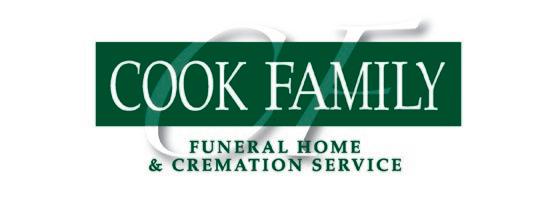
• The world can grow their economies faster and pay down the debt.
• The world nations can raise taxes, hold spending constant and use the higher taxes to pay down debt.
• Reduce spending on education, infrastructure and the social net and use the savings to pay down debt. That means cutting social security, healthcare, unemployment benefits, food stamps, agricultural subsidies and more.
• Increase inflation so there is more currency to pay down the debt owed
• Default on interest payments and reduce or delete principal payments.
The two highest probabilities are default and inflation. The chance of tripling GDP in the next few years is very unlikely. Some countries will try to raise some taxes, and some will try to reduce spending. Countries with the highest level of debt will probably default in the same way Greece defaulted 10 years ago. Countries with “manageable debt” will probably try to inflate their way out by printing more money to cover debt refinances which will be required.
In the United States the Fed pushed up Fed funds short term rates to deal with demand pull inflation and they were successful. However, we now face a different kind of inflation. America is facing cost push inflation. Demand pull can be stifled by raising interest rates. Cost push inflation driven by wage increases and material costs is more difficult. The cure for cost push we experienced in the 1970s – stagflation. Stagflation is inflation with a recession at the same time.
That does not help bonds.
The impact on short-term bonds will probably be even more devastating. The dollar from 1960 to 1980 lost 70 percent of its purchasing power. What that meant was, on average, what cost $1 to buy in 1960 cost $3 to buy in 1980. In 1960, a first-class stamp was 4 cents, a Coke was 10 cents, a dozen eggs 57 cents, and a gallon of milk was 49 cents. By 1980 the first-class stamp was 15 cents, a Coke was 35 cents, a dozen eggs was 91 cents, and a gallon of milk was $2.16. Those portfolios sitting in cash had lost 70 percent.
Short-term bonds and notes track the value of the dollar. From 1960 to 1980 the dollar lost 70 percent of its purchasing power. Think eggs at $6.00 per dozen are expensive now? If we experience an inflation like the 1970s eggs will be cheap at $28 per dozen. Milk could rise from $4.15 a gallon to over $15. A loaf of white sandwich
bread could increase from $3.12 to over $14.
Those prices seem almost unimaginable. But if the stagflation of the 1966 to 1980 period is an indicator, they are realistic. Think of how prices soared in 2021 and 2022 with a short bout of inflation. The inflation-stagflation time of 1964 to 1980 was a period of 16 years.
Think of what that does for portfolios or investors who rely on fixed income or fixed annuities. For short-term bonds a similar situation will probably result in a devastating loss of purchasing power and quality of life.
Inflation even with the latest figures in the United States is again on the increase. The impact of tariffs will probably increase inflation and reduce trade. Based on inflation alone bonds will probably experience a bear market.
GEOPOLITICAL
It seems like the United States is going to experience all three factors that are negative for bonds. President Trump has shifted from aligning with our traditional allies to connecting with Russia and Hungary. He has initiated tariffs and first implemented them on our two closest neighbors, Mexico and Canada. The impact of tariffs on both those
countries will probably hammer their economies.
For the 500 companies in the S&P 500 fully 41percent of their revenues are generated overseas. Those revenues are generated in countries on which our President has imposed tariffs. Their response is probably to react by implementing tariffs on a good portion of the $7 trillion of revenues the largest American companies generated overseas. Many of our former closest allies are negotiating free trade agreements with other allies and excluding the United States. That will place the United States at a significant disadvantage for those revenues that were generated overseas.
Bonds are presented to investors as stability and reduction of volatility in portfolios and financial plans. That seems short sighted, ignores history, and sets the stage for significant losses.
Annuities are even worse.
Mike Adams, President & Principal, Adams Financial Concepts LLC, 1001 Fourth Ave., Suite 4330, Seattle WA., 206-903-1019, https://adamsfinancialconcepts.com/

Positive Aging Mindset
By Gary Floring
Modern medical technology continues to increase natural human lifespans. Today’s average age for American men is just over 75, and 81 for women. These numbers are projected to gradually grow as preventive health practices and advanced knowledge (including “artificial intelligence” applications) extend our physiological and intellectual potentials. While medical science still seeks effective treatments for diseases and cognitive decline, we have more years ahead of us than ever before to live life to the fullest.
Positive aging is a general idea used to describe how people experience and succeed in the latter stages of their lives, and also how younger generations view their own process of aging. It is a multidimensional process that involves maximizing our physical, mental, emotional, social, and psychological well-being as long as possible. However, there is no consensus that can define “well-being” in the












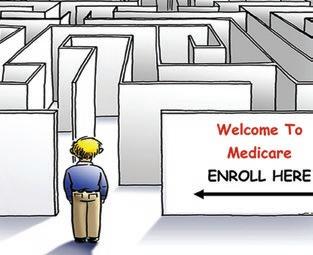
context of aging. One reason is, there is a quintessential qualitative aspect to aging as much as a quantitative one. We know that genetics, environment, and lifestyle habits have major influences on our quality of life. Of these three, our greatest power lies in making positive lifestyle decisions which enable a passion for living. Some real-life observations illustrate this practice.
As he approached 80, KFC founder “Colonel” Harlan Sanders said in an interview with Guideposts magazine: “Some people spend a good share of their lives planning for retirement, but the idea has never appealed to me. I guess I’m from the old school. It has long been my philosophy that a man will rust out a lot sooner than he will wear out, and that is why today at age 78, I have no intention, no desire, and no inclination to sit down and get rusty. So I say, ‘Life can begin again at 65.’ It sure did for me.” Colonel Sanders’ entire life was the very definition of a positive aging philosophy!
To put it mildly, actress Mia Farrow had a very rough start in life. She contracted polio at age 9; her brother was killed in a plane crash when she was 13, and her father died of a heart attack when she was 17. But she overcame every obstacle thrown at her and persevered. Farrow shows no sign of slowing down today at age 80. She has appeared in over 60 movies, not to mention over one dozen live theater performances. Just this year, she won a Tony Award for Best Performance by an Actress in a Play (“The Roommate”). Amazingly, she raised fourteen children over the course of her demanding career, four biological and ten adopted. Many quotes on positive aging have been attributed to Farrow; two of the richest are these: “Everyone faces obstacles, but it’s how you overcome them that defines you” and “You are never too old to set another goal or to dream a new dream.”
Rock star Mick Jagger of the Rolling Stones has been prancing around the stage for over 60 years with seemingly boundless energy. Today at 82, how does he still do it? For starters, Jagger’s father was a physical education teacher, and physical activity has always been a priority in his life. In 2019, after Jagger had a heart valve replaced, Vogue magazine reported, “His routine has always included running, cycling, and kickboxing.” The UK’s Daily Mirror also revealed, “Sir Mick also performs ballet, weight training, Pilates, jogging, and dynamic stretching, ensuring he maintains maximum flexibility.” The ageless rocker is also known to maintain a strict regimen of daily exercise
coupled with healthy nutrition, in addition to a very optimistic outlook on life.
Diana Ross is an iconic figure, beginning with her career as frontwoman of The Supremes in the 1960s. She’s been non-stop ever since. In 2022, Ross received a 2023 Grammy Award nomination in the Best Traditional Pop Vocal Album category. In 2023, she began a “Music Legacy Tour” which celebrated her greatest number one hits. Later that year and in 2024, she performed at London's Royal Albert Hall. Now 80, Ross appeared at the 2025 Met Gala, announcing she was on tour again, and continues to perform internationally. Americansongwriter. com quotes Ross’ positive aging philosophy with this: “You can’t just sit there and wait for people to give you that golden dream. You’ve got to get out there and make it happen for yourself.” Truly, she is as active as ever in recent years.
Emma Dotson is a nurse practitioner at the Swedish Center for Healthy Aging in Seattle WA. She specializes in cognitive neurology and healthy aging. Dotson has a unique perspective influenced by her background in geriatrics, psychiatry and neurology, and strongly promotes “Gerotranscendence.” As Dotson explains, “Gero means ‘old’ and transcendence means ‘rise above.’ As we age, our perspectives change and we often feel more connected to ourselves, others, and the universe. This translates to better well-being and a mindset that helps us rise above aging. People often focus on what they used to be able to do physically, mentally, and socially. They often feel discouraged by the changes they’re facing. But to embrace aging, we must shift that mindset to the present, focusing on what you can do now, how you can adapt, and how to find joy and purpose.”
Indeed, health professionals like Dotson have long emphasized the importance of maintaining engagement and interconnectedness with activities, hobbies, family, and social networks. All of these enhance a sense of achievement, community, and fulfillment no matter what age we are. An optimistic, youthful spirit also goes a long way in life. Remember, aging is a gift denied to many. An exquisite way to express positive aging is this: “life is not measured by the number of breaths we take, but by the moments that take our breath away.”
Gary Floring, We Know Medicare 101 Professional, 360434-6791, https://weknowmedicare.org/gary-floring/
POSITIVE aging
Find your purpose-redefine meaning & purpose as you age
Love your age-growing old is natural & normal
Keep strong-Care for your physical, mental, emotional & cognitive health
Enjoy life-Optimism improves immunity: smile & laugh more often
Stay Connected-strengthen relationships
Remember that frailty is the number one enemy of successful aging



Fighting Homelessness
By Bonnie Dickson
According to Zillow Home Value Index (ZHVI), the average cost of a home in Washington state is approximately $606,000. Even though there’s no change since last year, it’s a significant difference between the nation’s average, about $369,000. Rural locations such as West Virginia, Arkansas, Iowa, and Alabama, are the lowest in the nation but even those locations can make the American dream of home ownership unachievable. A recent study by the Joint Center for Housing Studies of Harvard University found that home prices were up 60 percent over 2019 prices. “This is a shocking five times the median household income and significantly above the price-to- income ratio of 3 that has traditionally been considered affordable,” according to the study.
Many builders combated those prices by producing homes that were smaller or had fewer amenities. The median size of a home declined again last year to 2,150 square feet (for perspective the average new home in 2021 was 2,532 square feet but was only 909 square feet in 1949). Despite shrinking home sizes, mortgage rate buydowns and other incentives, mortgage rates have priced less affluent households out of the market. The national average monthly mortgage payment rose to $2570 for a 30-year mortgage for a typical first-time homeowner in 2025 (well above the $1445 of just 3 years prior). To afford a payment that steep, a buyer would need an annual income of about $127,000. Only 6 million of the 46 million American renters fall into that category. In addition, the down payment for home ownership has increased to $26,800, making home ownership a prize that requires contributions from families and friends, if achievable at all.
High housing prices contribute to higher rental rates. As people find they cannot have access to purchasing their own homes, they are also finding that they then must rent. Last year nearly a million more households became renters over the year before, a number that vastly outpaced the number of new multifamily units by nearly 400,000. In 2004, the homeownership rate in the US was 69.2 percent, in the past two decades it has fallen to 65 percent. Meanwhile, the stock of units renting for less than $1,000 per month fell by 30 percent from 2013 to 2023.
The outlook for the industry does not indicate that rental or purchase rates for housing will go down in the near term. For one thing, much of housing materials will be affected by new tariffs. “Homebuilders estimate that the newly imposed tariffs on construction materials will increase new home prices by $10,900 apiece”, according to an April 2025 survey by the National Association of Home Builders (NAHB). And the number of new housing units created last year was a one off. There’s no expectation that the housing industry will continue to grow the number of units by a similar amount over the near term.
In 2023, 34 percent of older households (homes headed by someone 65 and over) were cost burdened, meaning they paid more than a third of their household income for housing. More than half of those individuals paid more than 50 percent of their household income for housing. Both renters and owners struggle. Nearly 60 percent of older renters were burdened in 2023 and 43 percent of older owners with a mortgage are cost burdened. This isn’t an insignificant number of people, in 2022, 31 percent of owners in their 80s or over still held a mortgage. However, even older adults who own their homes outright are seeing such steep increases in insurance, especially in those areas with the greatest risk of natural disasters, that
they are experiencing housing challenges (the number of billion-dollar disasters has increased exponentially). As homeowners reach 80 and over, the number of singleperson households increases. These individuals also see a lower median income and higher housing costs, due to the need for in-home services and accessibility modifications. The number of those householders 80 and over is projected to double in the next two decades.
Existing shortfalls in aid and proposed federal cuts to rental assistance, Medicaid and nutrition will especially target older Americans. According to the Joint Center for Housing Studies, those 50 and over already represent the fastest growing population of unhoused people in the U.S. While shoring up existing systems would help, the U.S. continues to need suitable, affordable, and accessible housing options.
To address issues such as housing density, many states, including Washington state have passed housing policies starting with zoning. In 2023, Washington HB1110 revealed a plan to create 1 million new homes by 2044. Currently, the most common types of housing built in Washington are the multi-family building (apartment complexes for instance) or the detached single-family home. California and Oregon passed laws to end single-family zoning in most cities. They looked at Houston’s successes because that city has reduced homelessness by more than half in the past decade.
Vermont, Montana, Colorado and New York are also looking at similar moves. The focus on HB1110 for Washington is to create “middle housing.” Middle housing includes things like duplexes, triplexes, townhouses, cottage housing (www.MicrolifeInstitute.org) and the like. Middle housing essentially tries to mimic single-family housing characteristics such as yards, porches, driveways and the like while housing more families more affordably. Spokane focused on allowing fourplexes on all residential lots in 2022 and there has already been an additional 400 new housing units added. Their pilot program allowed for more housing options to be approved and built without the need for special permits, variance, or discretionary review. States considering middle housing options are trying to return to more flexible zoning options.
Other cities, states and organizations have considered whether the public sector can return to lead roles in developing, owning, and managing housing to build institutionalized capacity. A private sector option is also available because the public sector option simply isn’t substantial enough to meet the needs. One option is a Mixed Income Neighborhood Trust (MINT-Trust Neighborhoods). This model uses private capital while still maintaining community control by developing, owning and operating a rental housing and retail portfolio.
Communities control the formation process and the MINT, provides a tool for a non-standard affordable housing option and provides more flexible finance options.
There’s a nationwide movement that assists manufactured home residents in converting their properties to cooperative ownership called ROCUsa (rocusa.org/policyand-advocacy/). Many manufactured homeowners don’t own the land under their homes. That means that the owners of the land control the land, site fees and the making of park rules. Homeowners are likely to see rent increases when the land under their homes is sold. When manufactured homeowners own the land, they choose infrastructure improvements, make their own rules, enjoy a stable monthly site fee. The result for the homeowners is security from unfair evictions but also a voice in how the community is run.
Housing, especially affordable housing, is a complex problem. All people should have access to safe, stable housing so that they can live, grow and age in communities that serve their needs. Homelessness is not a new problem but with a record-high 771,480 people experiencing homelessness on a single night in January of 2024 in the U.S., it is a catastrophe on an epic scale. We must do better.

Health CARE

By Evan Grolley, Au.D.,CCC-A
A Does Hearing Loss Cause Dementia?
lot of attention has been paid over the last few years to a series of studies that have shown a correlation between hearing loss and cognitive decline. This has led to a debate amongst insurance companies, healthcare providers, and even congressional representatives about whether hearing aids should be covered by insurance and Medicare. It’s also incentivized many people to see their audiologist for preventative care in hopes of mitigating their risk of dementia. But what are these studies and what have they actually said about the link between hearing loss and cognitive decline?
In 2013, a study titled Hearing Loss and Cognitive Decline in Older Adults was published in the Journal of the American Medical Association Internal Medicine. In this study, the authors looked at hearing tests and cognitive tests in a group of nearly 2000 adults. These participants were an average of 77 years old at the start of the study. The authors followed these participants for 12 years in what’s known as a longitudinal study, meaning the same people were followed over an extended period instead of comparing results between different age groups. What the authors found was that, compared to those with normal hearing, individuals with hearing loss at the beginning of the study had a 24 percent increased risk of cognitive impairment by the end of the 12 years. Additionally, the rate of decline and the risk of impairment increased as the severity of the hearing loss increased.
So, the study did show a correlation between hearing loss and dementia. And it also found a relationship between the severity of hearing loss and the likelihood of developing dementia. But this is not a definitive study showing that hearing loss causes dementia for a few reasons: (1) the study showed correlation, not causation, because other factors like genetic predisposition or
complications from other health conditions cannot be isolated from the variables that were being observed; (2) there are other traits that are also correlated with both hearing loss and dementia, such as depression and social isolation, which may contribute to the relationship; and (3) the underlying mechanisms that lead to that correlation remain unknown.
As a result, the study led to further studies examining the relationship between hearing loss and cognitive decline. It also prompted audiologists to rethink the way we discussed hearing loss with our patients. Some took this as a marketing opportunity to stress the importance of hearing healthcare with physicians who they saw as downplaying the effects of hearing loss over many years. Others worked it into their counseling with their patients, letting them know that new research was showing hearing loss can have an impact on cognitive health. Some even began trying to expand their scope of practice by taking it upon themselves to conduct cognitive screenings when patients came for hearing tests. But the biggest shift came after some later studies not only confirmed the results, but suggested hearing aids and implants could mitigate the risk of hearing loss leading to cognitive issues.
In 2023, the same group was joined by researchers from four community study sites across the USA and published a new study that looked at the effects of “hearing intervention” (use of hearing aids or cochlear implants) on the risk of cognitive decline. They knew from their previous study that there was a correlation between hearing loss and dementia, but what they didn’t know was whether using hearing aids or cochlear implants could help reduce the risk of dementia in the same population. This time, participants came from two groups: (1) current volunteers in a cardiovascular health study who were already considered at higher risk of developing dementia; and (2) new healthy volunteers. The two groups were randomly assigned to either receive counseling and treatment from an audiologist or complete a health education class. All
Karolina Grabowska
four groups were followed up every 6 months and were reassessed at the end of the 3-year trial. While there was no significant difference in the 3-year cognitive change between the two control groups (high-risk vs. healthy), or between the control groups and hearing intervention groups overall, there was a significant difference between the high-risk and healthy groups that received a hearing intervention. What they theorized this to mean is that hearing intervention might reduce cognitive changes in populations that are already at increased risk for cognitive decline.
As you can see, there are a lot of variables that make the takeaways from these studies less direct than just “hearing loss causes dementia” or “hearing aids prevent dementia.” As with the analysis of many research studies, looking at the design is key to determining what we can really learn from it. What was really interesting about the design of these studies was their use of a longitudinal model, which takes a lot longer to do and cannot be isolated from the larger context of the world in which we live, but has the advantage of following the same participants and seeing their progression over time instead of comparing them to other cross sections of the population – in short, it eliminates unknown variables that exist between different people, but introduces the other variables of everything that happens to

those individual people as they live their lives.
So then, what we can really draw from the available research linking hearing loss and cognitive decline basically boils down to 3 main points:
• People with hearing loss are more susceptible to cognitive decline.
• The more severe the hearing loss is, the greater the rate of cognitive decline.
• People who are more susceptible to cognitive decline due to other health concerns and also have hearing loss can mitigate their risk by using hearing aids or implants.
These are the points that we should keep in mind when talking to physicians and audiologists about whether we need hearing aids to stave off cognitive decline. At the very least it highlights the need for hearing testing to determine whether a hearing loss exists. But it also helps facilitate the conversation about what to do if there is hearing loss and whether that hearing loss can affect our health in other ways.
Evan Grolley, Au.D.,CCC-A, owner Link Audiology, 360551-4800, 3 locations,Vashon Island, University Place, and Silverdale. https://linkaudiology.com/
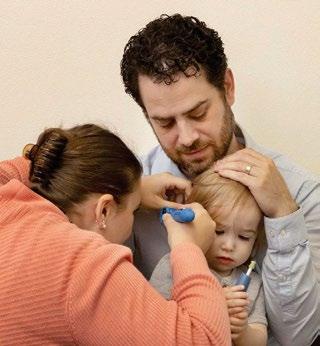
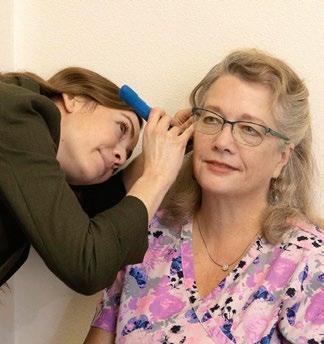
The Rising Impact of Alzheimer’s in Washington and How You Can Help
Alzheimer’s disease is a growing public health crisis, and its impact is being felt deeply across Washington state. Data from the Alzheimer’s Association’s 2025 Alzheimer’s Disease Facts and Figures report highlights a startling reality: more Washingtonians are living with Alzheimer’s than ever before, and many more are caring for loved ones through the challenges of this devastating disease.
With more than 126,000 people aged 65 and older currently living with Alzheimer’s in Washington State, nearly every community is touched by the disease in some way. These numbers are projected to rise in the years ahead, placing additional pressure on caregivers, health systems, and support services in our state.
Alzheimer’s doesn’t just steal memories; it places enormous physical, emotional, and financial strain on families. But amid the challenges, there is also hope.
Are You On e Right Path To Retirement?
• Get a handle on how much you have saved and how much you will need to retire.
• Determine where you want to live and do the research if that place is not your current residence.
• Prepare for time on your hands by choosing a hobby, part-time job, classes or volunteer to pursue.
• Lay the groundwork for tax-saving moves.

Awareness is growing, treatments are emerging, and communities like ours are stepping up to help.
NOW IS THE TIME TO ACT.
The Impact in Washington
• The statistics speak volumes—and behind every number is a person, a story, a family.
• 126,700 Washingtonians aged 65+ are living with Alzheimer’s in 2025.
• Alzheimer’s is the 4th leading cause of death in our state.
• 254,000 unpaid caregivers are providing care to loved ones with dementia.
• Those caregivers are contributing an estimated 390 million hours of unpaid care—valued at $11 billion.
• Over 60 percent of dementia caregivers have at least one chronic health condition themselves.
• Medicaid costs for caring for Washington residents with Alzheimer’s are projected to reach $747 million this year alone.
And yet, while the need for care grows, the workforce to meet that need remains stretched. Washington currently has just 180 geriatricians, and to meet expected demand by 2032, that number would need to grow by 68 percent.
Alzheimer’s doesn’t just affect individuals. It impacts entire families and communities, and it’s a problem we can’t afford to ignore.
Washingtonians Want to Know—and Prepare
This year’s report also includes findings from a national survey of U.S. adults over 45, offering insight into how people think about diagnosis and treatment. The results are clear: Americans want to know if they have Alzheimer’s, and they want to know early.
• Look for ways to reduce spending.
•
• Read Compass & Clock Look for ways to reduce spending.
• Nearly 80 percent of respondents said they’d want to know if they had Alzheimer’s—even before symptoms interfere with daily life.
• 90 percent would take a simple diagnostic test, like a blood test, if available.
• 92 percent would take medication to slow the progression of the disease.
• Nearly 60 percent would accept moderate or high risk to gain more time and quality of life.
These findings suggest a shift in mindset: people want to take control of their health, plan ahead, and seek help early. That’s good news because early detection means more time to access care, build a support system, and explore treatment options.
Local Resources Offer Real Support
Facing Alzheimer’s is hard—but no one has to do it alone.
The Alzheimer’s Association offers a full range of free programs and services throughout Washington, including:
• Dementia Care Navigation Services to help families navigate diagnosis, care planning, and local resources.
• Support groups for caregivers and those living with early-stage dementia.
• Education programs (online and in-person) on topics like understanding dementia, managing behaviors, and financial and legal planning.
• A 24/7 Helpline (800-272-3900) that provides aroundthe-clock access to dementia specialists.
Whether you’ve just received a diagnosis or have been caregiving for years, these services are here to guide and support you.
Be Part of the Solution
The fight against Alzheimer’s takes all of us. Whether you have personal experience or simply want to help, there are many ways to make a difference in your community.
Walk to End Alzheimer’s
The Walk to End Alzheimer’s is the world’s largest event to raise awareness and funds for care, support, and research. Held in communities across Washington each fall, the Walk is an opportunity to honor those affected by the disease and show up as a united front.
Whether you join a team, volunteer at the event, or cheer from the sidelines, your presence matters.
Sign up or find your local walk at alz.org/walk
Volunteer Your Time
Volunteers help power the mission. Opportunities include:
• Leading community education classes
• Facilitating support groups
• Helping with office or event logistics
• Serving as a committee member or Walk volunteer
The Alzheimer’s Association provides full training and support. Whether you can give a few hours a month or a few hours a year, there’s a place for you.
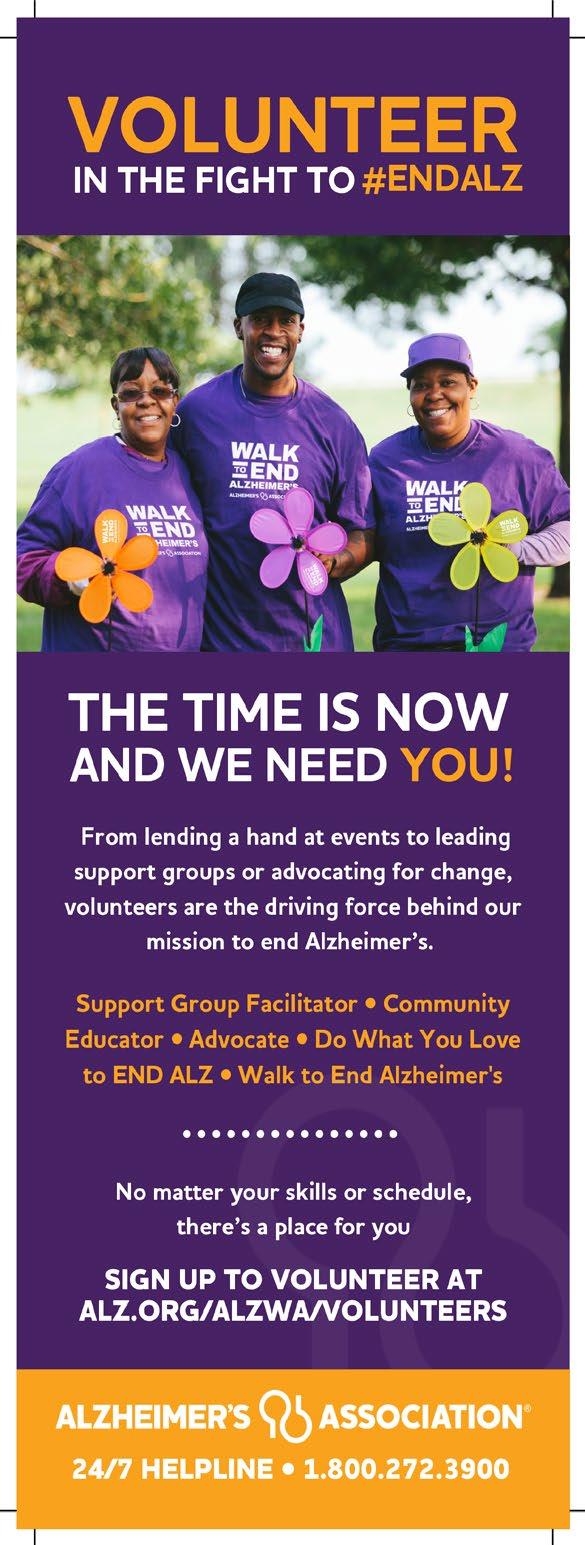
Health CARE
Explore options at alz.org/volunteer
Become an Advocate
Help influence state and federal policies that improve diagnosis, expand access to care, and increase research funding. Alzheimer’s advocates write letters, meet with legislators, and attend Washington State Advocacy Day to make their voices heard.
Learn more at alzimpact.org
Raise Funds Your Way
You don’t have to wait for a walk to make an impact. Through Do What You Love to End Alz (formerly known as The Longest Day), you can turn your passion, whether it’s hiking, baking, biking, into a fundraiser. You can also make a donation in honor of a loved one or start a tribute page.
Turn your passion into action at events. alz.org/event/ dowhatyoulove/home
A Shared Mission—and a Shared Hope
While there is still no cure for Alzheimer’s, we are making progress. Research is advancing. Awareness is growing.
And more Washington families are getting the support they need.
What’s needed now is action—by all of us. Whether you’re personally impacted by Alzheimer’s or simply want to be part of the solution, your involvement matters.
Together, we can ease the burden on families.
Together, we can push for earlier diagnosis and better care. Together, we can fund the breakthroughs that will one day end this disease.
Because together, we can move closer to a world without Alzheimer’s.
Need help? Want to get involved?
24/7 Helpline: 800-272-3900
Washington Chapter & Local Programs: alz.org/wa
Volunteer: alz.org/volunteer
Walk to End Alzheimer’s: alz.org/walk
Dementia Is an Umbrella Term


What You Should Know About Food Recalls
By Bonnie Dickson
Food is an integral part of being alive. So, it’s scary that it often comes with a warning. Bacteria are everywhere and virtually any food can harbor bacteria. Historical accounts of foodborne illnesses date as far back as 323 B.C. Records of Alexander the Great’s symptoms appear to indicate he died from typhoid fever caused by salmonella. Later, England created the Assize of Bread in 1202 to prohibit using ground peas or beans in the making of bread and to ensure fair pricing and quality. The U.S. first created food safety laws in 1785 that replicated the Assize of Bread, but it wasn’t until 1973 that the U.S. issued its first food recall.
Most American students read Upton Sinclair’s novel ‘The Jungle’ in middle or high school. Sinclair exposed appalling conditions in Chicago’s stockyards while working undercover. While the novel depicts many social issues of that time, the public outcry after it exposed health issues and unsanitary practices in the American meat-packing industry led to the passage of the U.S. Pure Food and Drug Act in 1906 rather than the socialist reform that Sinclair was aiming for.
Food safety has come a long way since 1906 but if you feel like food recalls occur on a nearly daily basis anymore, you’re not wrong. Last year, the Food and Drug Administration (FDA) issued 296 total recalls. Over 1300 Americans became sick from food that eventually the FDA recalled, nearly 500 people were hospitalized and 19 died. To provide some context, the year 2023 had 230 hospitalizations and 8 deaths. The good news is that 2025
appears to have fewer issues. The bad news is that some of the culprits remain the same since those first recalls, such as salmonella and listeria but we’ve also seen new players such as excessive lead in products such as cinnamon in 2024 or the heavy metals in baby food in 2023.
Most recalls have to do with allergens but obviously recalls haven’t been limited to just unreported allergens in food. Some major recalls include Odwalla’s unpasteurized apple juice being contaminated with E. coli in 1996 or the 18.6 million pounds of ground beef that were recalled for another E. coli contamination in 2002. Ground beef has often been associated with recalls, a 1997 recall pulled 25 million pounds of ground beef and in 2007, 21 million pounds of ground beef products were recalled. Eggs, deli meat, peanut products, cheese, cantaloupes, spinach, and cucumbers have all hospitalized Americans and often killed. The U.S. is obviously not the only country with recalls. Most famously, England had a mad cow disease scare from the 1990s and early 2000s, which still requires visitors to England to advise if they have recently been around farm animals.
In addition to the recalls that make the news, 48 million Americans get sick from foodborne illness every year, 125,000 will be hospitalized and about 5000 will die. Many of those diseases are spread from infected people sharing utensils and food, utilizing contaminated surfaces such as cutting boards during food preparation and not properly preparing foods.
As consumers, we have little input into how often a manufacturing plant is inspected. It’s in the neighborhood of once every four to five years and may become even
Tainah Ferreir
Health CARE
less often as government agencies continue to experience cutbacks, however we do have some ability to protect against foodborne illness and to a lesser extent food contamination even from manufacturing plants. Here are seven things you can do to prevent foodborne illness in your own home.
• Stay on top of recalls. People who are pregnant or have weakened immune system due to chronic illness, age or medical treatment are especially susceptible. Recalled items are specifically named (brand, use or freeze by dates, product name etc.) and if the item you have purchased does not match that information, it is considered safe to use. If your item is listed, either return the product or dispose of it. Do not open or consume it. Find a list of current recalled food items at FoodSafety.gov and Recalls & Public Health Alerts | Food Safety and Inspection Service.
• Keep hot things hot. Refrigerate or freeze leftover chicken within 2 hours or within 1 hour if the food is exposed to temperatures above 90 degrees such as in a hot car or at a picnic.
• Keep cold things cold. Keep your refrigerator at 40 degrees or below and your freezer at 0 degrees or below. Throw out food before it spoils. You can find a guideline for storage times at Cold Food Storage Chart | FoodSafety.gov. Thaw food in the refrigerator, in cold water or in the microwave, but definitely not on a counter.
• Pay strict attention to cooking temperatures. Use a food thermometer to make sure chicken, turkey and other poultry is at a safe internal temperature of 165 degrees, fish with fins, whole cuts of beef, veal, lamb, and pork (including fresh ham) should be 145 degrees and then allowed to rest for 3 minutes prior to carving or eating. Ground meat should reach 160 degrees, leftovers and casseroles should reach 165 degrees. Check Cook to a Safe Minimum Internal Temperature | FoodSafety.gov for a list of other foods and their safe temperatures. Microwave food thoroughly and allow it to sit for a few minutes to allow cold spots to absorb heat from hotter areas. Microwaved food should reach 165 degrees.
• Keep it clean. Wash hands and surfaces often. Before, during, and after food preparation, wash hands after handling uncooked meat, poultry, seafood, flour, or eggs. Wash utensils, cutting boards, and countertops with hot soapy water after preparing each food item. Rinse fresh fruits and vegetables under running water.
• Separate food items. Separate raw products such as eggs and meat from ready-to-eat foods. When grocery shopping, keep raw meats and their juices away from other food items. Use one cutting board or plate for raw foods and another for foods that won’t be cooked. Raw chicken does not require washing prior to cooking. Washing it can lead to spreading germs to other foods, the sink and to the counter. According to a USDA study (Consumer Research | Food Safety and Inspection Service), 1 in 7 people who cleaned their sink after washing chicken still had germs in the sink. Keep chicken stored in a sealed container or wrapped securely on a bottom shelf in the fridge so it doesn’t leak onto other foods.
• Avoid convenience foods. Consumers purchase convenience foods for a lot of reasons including the inability to have enough time to prepare the food themselves, reduction of waste when meals are for one or two people, and because they can help us eat healthier meals if we are in a rush. Most convenience foods are not being cooked by you. That removes a layer of safety as you don’t have control over choosing and storing them properly. If you use convenience foods, make sure that they are fresh, kept cold (packed in ice is best) or hot. Reheat hot foods. Don’t buy convenience foods until you are ready to eat them.
Bagged salads offer a practical and easy way to consume greens; however, they offer reduced nutrient content and risk of bacterial contamination along with that ease. They may also contain preservatives, and the use of chlorinated water can lead to long-term health risks. Healthier alternatives for bagged salads include organic bagged salads, freshly-cut salads, and locally sourced vegetables.
Symptoms of food poisoning may mimic the flu and include:
• Stomach pain: Stomach pain comes in multiple forms and can be an indication of serious problems. If you don’t know what caused the stomach pain, it becomes severe or doesn’t go away, contact your doctor.
Acute abdominal pain is fairly common, can occur over hours or days and may be something as minor as gas or as serious as appendicitis. If it comes on suddenly, seek medical attention.
Chronic abdominal pain lasts 3 months or more and may be transient. The pain can occur with other
symptoms such as diarrhea.
Progressive pain gets worse over time and usually additional symptoms occur. It can often be a sign of a serious health condition such as Crohn’s disease or cancer.
Colicky pain comes in waves that start and stop suddenly and is frequently severe. Kidney stones are a common culprit.
• Vomiting may be an indication of ingesting something toxic but can also occur from stress, overeating, motion sickness, reactions to medicine and the list goes on. Likely you know what is causing you to vomit but sometimes it is a side effect of a serious illness. The biggest danger involved in vomiting is becoming dehydrated and damaging your esophagus or the enamel of your teeth. Most of the time nausea can be treated with home remedies. Talk to a doctor if vomiting lasts more than a few days, if you have signs of dehydration, you have other medical issues such as chest pain, blurred vision or you’ve had an injury.
• Diarrhea occurs because of virus in your gut usually but also occurs due to allergies to certain foods,






medications, even from running. Mostly diarrhea is inconvenient but sometimes it is a warning of a more serious condition. If you have diarrhea for more than 3 days, contact a doctor. Contact a doctor immediately if you have bloody or tarry stools, a fever over 101 for more than 24 hours, an inability to drink fluids, severe stomach pain or you recently returned from a foreign country.
• Stomach cramps occur for many reasons but can happen when you eat contaminated foods. It can take minutes, hours, or days for symptoms to appear. Stomach viruses and food poisoning have similar symptoms and it can be easy to confuse the two.
• Dehydration is the lack of fluids preventing your body from functioning properly. Severe dehydration is a medical emergency and needs to be treated immediately.
Bottom line is that eating cannot be avoided but contaminated food can be. If the worst happens and you believe you have come in contact with contaminated food, contact a medical professional. Follow recommendations for food safety and stay informed about recent food safety recalls.




Slow Aging by Fixing Your Posture
By Bonnie Dickson
My mom used to make me walk around with an encyclopedia on my head. No, it wasn’t punishment. It was among the outward signs of despair that her eldest daughter would ever walk straight. Truth be told I still slouch and she long since gave up on me. Most of us slouch and when I say most, I mean upwards of 80 percent of Americans have poor posture. And unfortunately, most of us don’t slouch less as we age. Slouching is essentially letting gravity pull your body into a position that requires the least amount of effort, rather than sitting or standing in an upright position. You are slouching if you have a rounded spine from the base of the neck down to the base of the spine causing a “kink” in both the base of the neck and skull.
Slouching doesn’t necessarily mean you are lazy. There are often factors that cause us to slouch. We spend hours in front of a computer for one thing but there are other reasons we slouch such as:
Weak muscles: An upright position requires strong back and abdominal muscles and let’s face it, most of us haven’t purposely exercised those muscles since high school gym class.
Poor ergonomic conditions: Americans spend almost 3 hours per day watching television. Notice I said television and not screen time, which just adds to that time. Have you looked at your couch recently as something to encourage good posture? Most of our furniture
encourages slouching. In fact, when I think of furniture that might not encourage slouching, it’s probably a couple hundred years old.
Gravity: Lots of benefits such as being able to move smoothly about your day without working trajectories in your head come from gravity. But, gravitational pull is constant, relentless and devastating to anything that doesn’t work against it.
Lack of awareness: Slouching can seem more comfortable because it takes less effort. If you sit in the same position for a long time, your muscles become fatigued and allow gravity to take control.
So, why focus on slouching. It’s the new buzzword in antiaging. Posture controls the shape of your face therefore good posture slows down the visible signs of aging. Is everyone out promulgating the idea that good posture is a health and beauty product-no, but many are.
Approximately 568.4 million cases of disabling lower back pain exist in the world with the highest prevalence seen in the U.S. In the U.S. alone, an estimated $134.5 billion was spent on back pain alone in 2016. Much of back pain in the U.S is attributed to obesity. According to Harvard paleoanthropologist Daniel Lieberman, your chances of getting low back pain are between 60-90 percent.
Bad posture may cause additional problems. Slouching places pressure on the bladder while simultaneously decreasing the ability of the pelvic floor muscles to hold against the pressure. This causes incontinence, constipation, heartburn and slowed digestion. If you have these issues, talk with your doctor about whether your
Olia
Danilevich
posture may be their cause. Slouching can also cause the back pain we talked about earlier and finally, it can cause the aesthetic issues that has social media influencers all aflutter. Those issues include forward head posture, tech neck (a mild to severe neck and upper back pain associated with premature arthritis and other maladies) and hunchback.
WHAT TO DO:
Create an ergonomic setup that creates a comfortable but well-supported position. If you work at a computer, make sure that you don’t sit too far from the computer. Your elbows should be bent at 90 degrees or more and you should not have to lean forward to use the mouse or the keyboard. The computer screen should be positioned at eye level. If you usually use a laptop, use an external keyboard and mouse to allow you to position your arms correctly. One study by NewYork-Presbyterian Hospital determined that the difference between the neutral position (meaning having a 0 degree shift forward) to a 45 degree or even 60 degree angle (the two angles most often seen when people are checking their cell phones) is
like the difference between hanging 10-12 pounds of strain around your neck to 49 pounds (for 45 degree tilt) and 60 pounds ( for 60 degree tilt). That study, by the way, does not advocate a 0 degree tilt but a recline of 25-30 degrees. Change your position every 20-30 minutes. This will allow your muscles to recover. Even just standing for a moment before resuming your seat will assist with cutting down muscle fatigue.
Strengthen your core, neck and shoulder muscles. Try yoga, Pilates or stretching. Focus on exercises that strengthen your core. Your core muscles stabilize your pelvis and spine. Yoga, Pilates and other core programs target your core with slow, controlled movements rather than the jerky movements many people remember from sit ups and other exercises designed to strengthen your core.
Use supports such as lumbar braces, neck travel pillows, or even rolled clothing to provide additional support. Save yourself money, time and energy by speaking to your doctor or chiropractor to get a plan that addresses your situation.
Knee Pain Slowing You Down?? Why Choose

Knee on Trac has given me back my ability to comfortably work on my feet all day. I can enjoy walking and exercising again without constant pain from my knee. I feel as though years have been taken off my knee.
~Andrew S.
Call TODAY to schedule an appointment to see if the Knee on Trac system is right for you. Mention this ad and save 50% off your initial evaluation consultation, knee and lower extremity neurologic and orthopedic examination and any necessary x-rays (savings of $125.00)

Health CARE
What Is Chiropractic Care: Understanding the Spine, Nervous System, and Your Health
By Brian Kovara, DC
Chiropractic care is a form of healthcare focused on diagnosing, treating, and preventing disorders of the musculoskeletal and nervous systems, with a particular emphasis on the spine. Founded in the late 19th century, chiropractic is rooted in the understanding that optimal health begins with a properly functioning nervous system and that spinal misalignments can interfere with that function. Chiropractors use handson spinal adjustments and other non-invasive therapies to restore alignment, improve nerve flow, and support the body’s natural healing processes.
THE SPINE AND ITS ROLE IN HEALTH The spine is far more than a structural support for the body—it houses and protects the spinal cord, a key part of the central nervous system (CNS). The spinal cord acts as a communication highway, relaying messages between the brain and every organ, gland, muscle, and cell in the body. These messages travel via spinal nerves that exit between the vertebrae and branch out to every system of the body.
When the spine is properly aligned, nerve signals can flow freely, and the body can function at its best. If a vertebra becomes misaligned, or a condition called “subluxation”, it causes irritation and/or compresses nearby nerves. This interference may disrupt communication between the brain and the body, leading to a wide range of symptoms and dysfunctions, even in areas seemingly unrelated to the spine.
THE SPINE-NERVE-ORGAN CONNECTION Each level of the spine corresponds to a specific group of nerves that control different organs and functions. Understanding this relationship can help explain how chiropractic care affects more than just back and neck pain:
CERVICAL SPINE (NECK) – C1 TO C7:
C1 (Atlas): Affects the blood supply to the head, pituitary gland, scalp, and inner ear. Misalignment may contribute to headaches, migraines, dizziness, and sinus issues.
C2: Related to the eyes, ears, tongue, and forehead. May be involved in vision problems, hearing loss, and sinus congestion.
C3–C5: Influence the cheeks, neck, vocal cords, diaphragm,
and shoulders. Dysfunction here can affect breathing, speech, and nerve pain down the arms.
C6–C7: Connect to the thyroid gland, arms, elbows, and hands. Misalignment may cause carpal tunnel symptoms, thyroid imbalance, or tingling in the fingers.
THORACIC SPINE (MID-BACK) – T1 TO T12:
T1–T4: Supply nerves to the heart, lungs, and upper digestive organs. Issues here may contribute to asthma, high blood pressure, or palpitations.
T5–T9: Impact the stomach, liver, pancreas, gallbladder, and small intestine. Nerve interference may be related to heartburn or acid reflux, indigestion, ulcers, liver dysfunction, or blood sugar imbalances.
T10–T12: Connect to the kidneys, adrenal glands, and reproductive organs. Misalignments may affect hormonal balance, fatigue levels, or lower abdominal pain.
LUMBAR SPINE (LOWER BACK) – L1 TO L5:
L1–L2: Affect the large intestine and lower abdomen. Problems here can be related to constipation or irritable bowel symptoms.
L3–L5: Influence the bladder, reproductive organs, knees, and legs. Misalignment may lead to sciatica, menstrual issues, or leg weakness.
SACRUM AND COCCYX:
These lower spinal segments impact bowel and bladder control, pelvic function, and the sciatic nerve. Issues here
may be associated with incontinence, tailbone pain, or nerve disorders in the lower extremities.
How Chiropractors Address Nerve Interference
Chiropractors use specific techniques—most commonly spinal adjustments—to restore motion and alignment to the vertebrae. By doing so, they aim to relieve pressure on the nerves and restore proper function to the related organs and tissues.
A TYPICAL CHIROPRACTIC VISIT INCLUDES:
History and Examination: Understanding the patient’s symptoms, lifestyle, and spinal health.
Spinal Analysis: Evaluating the spine for misalignments, postural issues, areas of restricted movement, and in most cases a set of diagnostic x-rays.
Adjustments: Gentle, controlled force applied to specific joints to correct alignment.
Supportive Care: This may include stretches, exercises, ergonomic advice, and lifestyle recommendations.
What Conditions Can Chiropractic Help?
While many people first seek chiropractic care for back or neck pain, its effects on the nervous system mean that it may also support a variety of conditions, including:
• Headaches & migraines
• Numbness & tingling
• Asthma & allergies
• Menstrual discomfort
• Stress and fatigue
• Sciatica & disc issues
• TMJ (jaw pain)
• Digestive problems
• Sleep disturbances
It’s important to note that chiropractors do not treat specific diseases. Instead, they work to remove interference in the nervous system so the body can better regulate and heal itself.
THE HOLISTIC APPROACH Chiropractic care is rooted in a holistic philosophy: the belief that the body has an innate ability to heal when given the right conditions. By focusing on spinal health and nervous system integrity, chiropractic supports this natural process. Chiropractors often collaborate with other healthcare providers and may incorporate nutrition, exercise, and wellness strategies into their care plans.
FINAL THOUGHTS Chiropractic care is more than just a treatment for back pain—it’s a powerful way to support the health of your entire body. By understanding and addressing the vital connection between the spine and the nervous system, chiropractors help patients restore balance, function, and vitality from the inside out.
Brian Kovara DC, Chiropractor, Living Well Bainbridge,Chiropractic Care, 206-842-4929, Serving Kitsap and Surrounding Areas, http://www.livingwellbainbridge.com


Why Choose Spinal Decompression?
• Non-Invasive & Drug-Free – A gentle, therapeutic alternative to surgery and medication.
• Targets the Root Cause – Reduces pressure on spinal discs and nerves for long-term relief.
• Enhances Healing – Promotes circulation and disc hydration to support recovery.
• Comfortable & Customizable –Tailored treatment sessions designed for your unique needs.
Call TODAY to schedule an appointment to see if the Spinal Decompression Therapy is right for you. Mention this ad and save 50% off your initial evaluation consultation, full spinal neurologic and orthopedic examination and any necessary x-rays (savings of $125.00).
www.livingwellbainbridge.com
Health CARE
Am I Having a Mini Stroke?
How Do I Know?
By Mary Coupland
These are two great questions—and very serious. Let’s walk through this carefully, but if you think you might be having a stroke or TIA (Transient Ischemic Attack), please call emergency services immediately (911 in the U.S. or 111 in N.Z.) or go to the nearest emergency room. Time is critical.
Am I Having a Mini Stroke?
A “mini-stroke” is a TIA (Transient Ischemic Attack)—a temporary blockage of blood flow to the brain. It doesn’t cause permanent damage, but it’s a serious warning sign.
Common TIA Symptoms include:
• Sudden numbness or weakness, especially on one side of the body
• Trouble speaking or understanding speech
• Sudden confusion or dizziness
• Trouble walking, loss of balance or coordination Vision problems in one or both eyes
• Sudden, severe headache with no known cause These symptoms usually last less than 24 hours—often just a few minutes—but require immediate medical attention.
How Do I Know if It’s a TIA or Stroke?
You can’t tell the difference just by how you feel. The symptoms are the same—the difference is that TIAs go away, and strokes do not. Only a doctor (with tests like MRI, CT scan, or ultrasound) can tell the difference.
Use the FAST test to check for signs:
• Face drooping
• Speech difficulty
• Arm weakness
• Time to call 911
Even if symptoms go away: call emergency services. TIAs often come before a major stroke—1 in 3 people who have a TIA go on to have a stroke, often within days or weeks.
What to Do Next Based on Your Symptoms.
First, assess your symptoms right now. Ask yourself these questions or have someone help you check:
Face: Is one side of your face drooping? Can you smile evenly?
Arms: Raise both arms. Does one drift downward or feel weak?
Speech: Say a sentence like “The sky is blue today.” Does your speech sound slurred or strange?
Other signs: Sudden numbness or tingling (especially on one side), sudden vision problems, trouble walking, dizziness, loss of coordination, sudden confusion or trouble understanding, or sudden severe headache.
If you have ANY of these symptoms—even if they go away call 911 in the U.S. or 111 in N.Z. or go to the ER immediately. Don’t drive yourself. Emergency responders can start treatment faster, even en route. Time = Brain. Every minute counts.
Questions to ask your doctor. Whether you’re in the ER now, being evaluated soon, or following up, here are key questions to ask:
About Your Current Episode
Was this a stroke or a TIA?
What part of the brain was affected?
What caused it—do I have a clot, bleeding, or narrowing of arteries?
Do I need imaging (CT/MRI) or other tests?
About Treatment and Prevention
What medications will I need (e.g., blood thinners, blood pressure meds)?
Do I need to see a neurologist or stroke specialist? Should I be worried about having another stroke soon? Do I need surgery or procedures (like a carotid endarterectomy or stent)?
Do I need to change my lifestyle (diet, exercise, smoking, etc.)?
About Follow-Up and Recovery
Do I need rehabilitation therapy (physical, speech, occupational)?
What are the warning signs of another stroke or TIA? What’s my stroke risk going forward?
Are there underlying conditions (like atrial fibrillation) that need treatment?
What’s Life Like After a Stroke?
This is a deeply personal and important topic. Life after a stroke can be challenging, but also full of hope and recovery. The experience is different for everyone, depending on the type, severity, and location of the stroke, and how quickly treatment was received. Possible
outcomes with a mild stroke include that you may recover fully with therapy. A moderate to severe stroke can lead to long-term disabilities.
Physical Recovery (Common physical effects):
• Weakness or paralysis (usually on one side)
• Loss of coordination or balance
• Fatigue (very common and often persistent)
• Swallowing difficulties (dysphagia)
• Pain or stiffness in muscles and joints
• Spasticity (muscles may be tight or rigid)
What helps:
Recovery is often fastest in the first few months, but improvements can continue for years with therapy and support such as physical therapy with a focus on walking, strength, and coordination; occupational therapy for help with daily tasks like dressing, cooking, and hygiene; and speech therapy if language or swallowing is affected
Many stroke survivors experience communication and cognitive challenges such as:
• Aphasia – trouble speaking, understanding, reading, or writing
• Memory issues – short-term or long-term memory loss
• Difficulty focusing or problem-solving
• Emotional outbursts or personality changes
What helps:
Speech-language therapy, cognitive rehab and memory strategies, patience and supportive communication from loved ones, and technology (apps, speech devices, etc.) are all means of supporting your own or a loved's one's recovery. It’s common to feel depressed, anxious, frustrated or angry, and/or isolated or misunderstood. Having a strategy and tools can support the healing process and help with the emotional rollercoaster you may experience as a result of a stroke or mini-stroke.
Stroke affects the brain and the heart. Get help by seeking counseling or therapy (especially from someone who understands stroke), joining a support group (in person or online), making sure to take medication for depression or anxiety if needed, and getting family education to help loved ones understand what you’re going through.
Daily life and independence. After a stroke, people may need help with: transportation; cooking and meals; bathing, dressing, or grooming; and managing medications. But many people regain full or partial independence, especially with good rehab and home modifications.
CARE
Returning to work or hobbies, for some people they are able to go back to work or driving, though it may take time, while others choose to find new roles or hobbies.
Ongoing health and prevention is key after a stroke, as there’s a high risk of a second stroke, so prevention is critical. Make sure you control blood pressure, cholesterol and blood sugar; Take medications (aspirin, blood thinners, statins, etc.); Eat a heart-healthy diet (DASH or Mediterranean); Avoid smoking and limit alcohol; And stay active (within ability).
Bottom line, If you’re currently experiencing any symptoms of stroke or TIA, even if they’ve gone away don’t try to “wait and see.” Even if it turns out to be nothing serious, it’s safest to get checked. Get emergency care now. A doctor can determine what’s happening and prevent further damage—or save your life.
KnoKnoww Str Strokokee
6 Ways to Lower Stroke Risk

Disrupt stroke before it completely disrupts your life.
Is Your BMI Important?
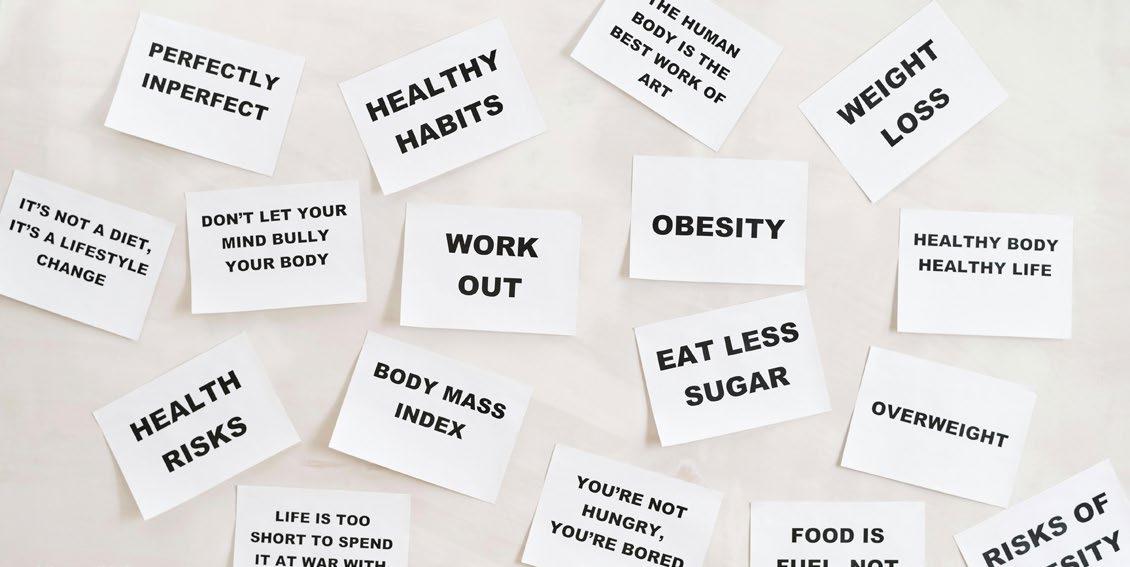
By Bonnie Dickson
In 2007, the Nintendo Wii Fit came out and almost immediately people began complaining. They weren’t complaining that the game system’s intention to make family fitness fun failed because the system was immensely popular. They complained because an integral part of the systems calibrations involved Body Mass Index or BMI. In the game system, player’s BMI and balance control is tested. Some parents and even some athletes complained that the system listed them as overweight due to their BMI. One reviewer even said that the game developers must have asked themselves “what if we body shame children and call it a game?”
So, what is BMI? BMI is a tool that healthcare professionals use to estimate your body fat by measuring the ratio of your height to your weight. In the simplest of calculations, BMI correlates to body fat because generally speaking the higher your weight, the higher the likelihood that your body mass is high as well. High body fat may lead to heart disease, stroke and Type 2 diabetes, whereas low body fat can be seen as signs of malnutrition, anemia, weakened immune systems and osteoporosis. The issue is that what is generally the case isn’t always the case and that includes BMI. For instance, and this was a big issue for Nintendo, BMI shouldn’t be used to evaluate a child’s or teenager’s health.
So, how do you calculate your BMI? You multiply your weight in pounds by 703. Divide the resulting answer by your height in inches, divide that answer by your height in inches again. It looks something like this if you weigh 180 pounds and are 5 feet 5 inches tall.
• 180 (pounds) x 703 = 126,540
• 126,540 / 65 (inches) = 1,946.769
• 1,946.769 / 65 (inches) = 29.95
* If you aren’t a fan of calculating anything, you can find a BMI calculator at Calculate Your BMI and let a calculator do the job.
You take that resulting number and compare it to the below listing:
• Underweight: Less than 18.5
• Optimum range: 18.5 to 24.9
• Overweight: 25 to 29.9
• Class 1 obesity: 30-34.9
• Class 2 obesity: 35 to 39.9
• Class 3 obesity: More than 40
So, in our example above this individual would technically be overweight.
Usually, the higher your BMI, the higher your risk for
diseases. As in all generalities, having a low BMI does not exclude the risk for disease nor does a high BMI guarantee disease but it is a good beginning. BMI has limitations such as those already indicated and these:
BMI does not differentiate between lean body mass and fat mass. Muscular people can have a very low-fat mass. In addition, the same chart is used for males and females even though adult females usually have more body fat than adult males. So, BMI should not be used for athletes and bodybuilders, children and teenagers, pregnant women, anyone over the age of 65 or people with muscle atrophy.
BMI doesn’t measure the location or distribution of body fat. People with excess weight in their bellies have a higher risk of health conditions than those with excess weight in other areas.
Two people with the same BMI can have vastly different health profiles. A person with a “normal” BMI but poor body composition may overlook health risks.
Its other downside is that it could underestimate the health risks in older adults with low muscle mass, it doesn’t take gender or ethnicity into account and there are significant variations in obesity prevalence.
Why use BMI if it has all these qualifiers? Well, for one thing it is a quick tool to assess your health and it’s cheap. It requires no fancy tools. And it’s fast, three calculations and you’re done. Finally, it’s a good starting point. Knowing your BMI can guide treatment options.
So, what do medical providers use for a tool that might be more nuanced and thus more accurate? One option is bioelectrical impedance analysis (BIA). BIA uses an electrical current to estimate body composition using scales that cost a few hundred dollars, but it also has drawbacks. Accuracy between machines is affected by home versus professional, the number of electrodes and number of currents.
In addition, BIA readings are sensitive to hydration status, meaning dehydration can cause the system to overestimate fat. Results can differ depending on the time of the day the readings are taken depending on meals and exercise. However, BIA is a stronger predictor of 15-year mortality risk in adults between 20 and 49 years of age. In at least one 2019 study, people with a higher BMI level were not statistically more likely to die than those with a healthy BMI. However, there was a 262 percent higher chance of dying from heart disease for those with higher
BIA readings.
In 2023, the American Medical Association (AMA) advised that they didn’t want to ignore the use of BMI, but recommended other measurements such as body composition, waist circumference, and genetic factors be included. They also recommended that the insurance industry should not use BMI as a reason to deny insurance reimbursement.
So, which should be used? BMI is quick, BIA offers deeper insights. BMI is cheap and BIA is a more expensive option. BMI isn’t perfect but neither is BIA. Although BIA is becoming cheaper and less time consuming, there is also no current definition of a healthy body fat percentage. One option is to use both to make assessments until more studies and more information have been able to make a consensus of healthy readings using BIA and until something out there is as cheap, accessible and easy as BMI calculations.
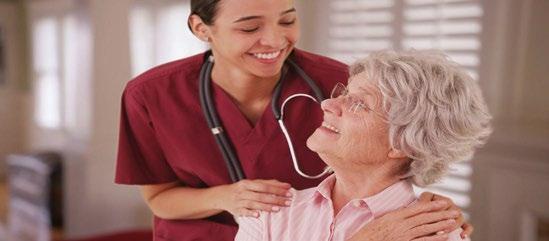



Health CARE
Is More Protein Better For You?

By Mary Coupland
Is more protein in your daily diet really better for you? Protein plays a crucial role in our daily health, but more isn’t always better. Let’s take a peek at how much protein you actually need and then look at what a balanced daily diet should include.
While adequate protein is essential for muscle maintenance, immune function, hormones, and repair, excessive protein may be unnecessary for sedentary individuals, it can put strain on kidneys (especially in people with preexisting kidney issues) and it can displace other important nutrients (like fiber from fruits/ vegetables).
More protein is beneficial for active people and athletes; elderly adults to prevent muscle loss; during weight loss it helps retain muscle mass; and after an illness or surgery it helps with recovery.
General Guidelines per kg of body weight are recommended for daily protein intake:
Adults that are sedentary need 0.8 grams/kg/day and this is the bare minimum for their health.
Older adults (65+ older) need 1.0–1.2 grams/kg/day to prevent sarcopenia, which is the loss of skeletal muscle mass and strength as a result of aging.
Athletes need 1.4–2.2 grams/kg/day for muscle building and recovery.
People during weight loss programs need 1.6–2.2 grams/ kg/day to help preserve lean mass, which is the body’s
weight excluding all fat. It encompasses muscles, bones, organs, and body water.
Here’s an example: an adult that weighs 70 kg / 154 pounds and is sedentary needs 56 grams of protein daily, while an active individual at that same weight would need 84 - 140 grams of protein daily.
The key is balance – it’s not just protein. Now what types of food should be included in a balanced daily diet?
Macronutrients are carbohydrates, proteins, and fats. These are the nutrients the body needs in copious quantities for energy and to maintain its structure and functions. Carbohydrates provide the body with its primary source of energy. Proteins are essential for building and repairing tissues, producing enzymes, and hormones, and for supporting the immune system. The fats provide energy and help absorb vitamins, and they are crucial for hormone production and cell function.
Here’s what a healthy daily diet should include:
Protein - needs to be 10-35 percent of your daily calories. The best sources for protein are fish, eggs, poultry, tofu, beans, lentils, and Greek yogurt.
Fats - need to be 20-35 percent of your daily calories. The best sources for fats are olive oil, nuts, seeds, avocado, and fatty fish.
Carbohydrates - need to be 45-65 percent of your daily calories. The best sources for carbohydrates are whole grains, fruits, vegetables, and legumes.
But macronutrients are not the whole story. Our body also needs the vitamins and minerals present in healthy foods–the micronutrients. The human body requires small amounts of micronutrients. Micronutrients play a
significant role in the metabolic activities of the body and since our bodies cannot produce vitamins and minerals, we rely on obtaining them from different foods.
Micronutrients do everything from improving blood health to strengthening bones and improving the immune system. Fortunately, most of these essential nutrients come from slightly altering your diet or adding a supplement where necessary. Several especially critical nutrients to focus on are:
Iron – Some sources of iron are oysters, white beans, and spinach. Anyone with anemia or other blood-related health conditions understands the importance of iron. Not only does iron contribute significantly to a healthy bloodstream, but it also encourages mental and physical development for young children and healthy births for expectant mothers.
Iodine - Seaweed, cod, and yogurt are all excellent sources of iodine. In adults, iodine helps regulate hormone levels, especially thyroid hormones. This helps balance your body’s metabolism. Expecting mothers also benefit from iodine as it encourages a healthy pregnancy and essential mental development for the baby.
Vitamin A - This vitamin plays an important role in the immune system and can be found in carrots, sweet potatoes, spinach, liver, beef, fish, and dairy products. Adding foods like certain fish and leafy green vegetables to your diet will improve your vitamin A intake, along with supplements for those with dietary restrictions.
Vitamin D - Vitamin D encourages strong bone development and reduces the risk of bone disease and can be found in fish oil and milk, and let’s not forget sunlight. While your body will produce vitamin D, the amount produced is rarely enough to meet your nutritional needs. Try to buy foods fortified with additional vitamin D (such as certain types of milk) and take a supplement if your doctor
RECOMMENDATIONS
recommends it.
Zinc-Zinc provides your immune system with a muchneeded boost to help fight disease and can be found in oysters, crab, and chickpeas. Since your body doesn’t produce zinc on its own, dietary choices and supplements are your only sources of this nutrient. For anyone looking to keep their immune system strong, zinc is a critical choice.
Folate - Folate encourages healthy pregnancies and overall wellness in most adults. It is sometimes called vitamin B9, and can be found in dark green leafy vegetables, legumes, and fruits. Folic Acid, the synthetic form of folate, is also an essential nutrient. Consuming enough folate contributes to health, but in America, folate deficiency is not as significant a concern as some other vitamin deficiencies. A variety of foods come fortified with folic acid to encourage intake.
Picture your plate as a circle and divide it into quadrants. A quick healthy plate model, per meal would look something like this:
¼ Protein (lean meat, tofu, beans)
¼ Whole grains (brown rice, quinoa)
½ Vegetables & fruits
Don’t forget to add healthy fats (nuts, seeds, avocado) to your diet, and drink plenty of water or unsweetened drinks throughout the day.
As we’ve learned, more protein isn’t always better, but enough is crucial. Remember to tailor your intake based on age, sex, activity level and goals, while focusing on whole food sources of protein, not just supplements. Never neglect carbohydrates, fats, fiber, vitamins, or minerals –balance is key.
Health CARE
Ten Common Chronic Health Conditions For Older Adults
By Mary Coupland
Chronic health conditions are a major concern for older adults worldwide, not just in the United States. While aging increases risk, lifestyle choices, access to healthcare, and early detection play key roles in prevention and management.
Here are the most frequently reported, most common chronic conditions among older adults, globally and in the U.S.:
1. Hypertension (High Blood Pressure) - Also known as high blood pressure, it is a condition where the force of blood against the artery walls is consistently too high. While blood pressure naturally fluctuates throughout the day, hypertension refers to persistently elevated readings. Global prevalence: Affects over 1.3 billion people.
Why it matters: This can lead to serious health problems like heart disease, stroke, and kidney failure if left untreated.
Preventable? Yes, largely through diet, physical activity, stress management, and medication if necessary.
2. Diabetes (Type 2) - A condition where the body doesn’t use insulin properly, leading to high blood sugar levels. It’s the most common form of diabetes and is often linked to lifestyle factors like diet and exercise. In type 2 diabetes, the body’s cells, particularly in muscles, fat, and liver, don’t respond effectively to insulin. This means glucose can’t be efficiently transported from the blood into the cells, causing a buildup of glucose in the bloodstream. Linked to: Poor diet, obesity, inactivity, and genetics.
Preventable? Often—especially type 2. Lifestyle changes can delay or even reverse early-stage diabetes.
3. Cardiovascular Disease (CVD) - CVD is a broad term for conditions that affect the heart and blood vessels (arteries and veins). It’s a leading cause of death globally and encompasses various ailments like coronary heart disease, stroke, and peripheral artery disease. Includes a range of conditions beyond heart attacks and strokes, such as coronary heart disease, cerebrovascular disease, and peripheral arterial disease
CVD is the world’s number one killer, with heart attacks and strokes being the most frequent causes of death.
Preventable? Largely. Diet, quitting smoking, staying active, and regular checkups are key.
Osteoarthritis – A degenerative joint disease, it’s the most common type of arthritis, characterized by the breakdown of cartilage within joints. This leads to pain, swelling, and stiffness, limiting movement and affecting quality of life. While there’s no cure, various treatments can help manage symptoms and improve function. Age-related but it is not inevitable. Family history can play a role in susceptibility
Worsened by: Previous injuries or joint overuse can contribute to the development of osteoarthritis. Obesity, excess weight puts additional stress on joints and increases the risk. Conditions like diabetes and certain autoimmune diseases can also increase the risk
Preventable? Not fully but maintaining a healthy weight and low-impact exercise (e.g., swimming, yoga) help reduce severity.
4. Chronic Respiratory Diseases (CRDs) – CRDs are a group of conditions that affect the airways and other parts of the lungs, causing long-term breathing problems. These conditions are typically long-lasting and can significantly impact an individual’s health and daily life, as well as affecting their families and communities.
Linked to: Smoking, air pollution, occupational hazards. Common Examples. Include asthma, chronic obstructive pulmonary disease (COPD), cystic fibrosis, and sleep apnea.
Preventable? Most COPD cases are due to smoking or longterm exposure to poor air quality.
5. Cognitive Decline / Dementia - Cognitive decline refers to a decrease in a person’s mental abilities, including memory, thinking, and judgment, which can impact daily life. It can be a normal part of aging, but it can also be a sign of underlying medical conditions, such as Alzheimer’s disease or other forms of dementia.
Risk increases with age. Cognitive decline involves a deterioration in cognitive functions such as memory, thinking, language, attention, executive function, visuospatial skills, and judgment.
Preventable? Not fully, but risk can be reduced by staying mentally active, healthy eating, managing cardiovascular risk factors, and maintaining social engagement.
6. Cancer - Cancer is a disease characterized by the uncontrolled growth and spread of abnormal cells within the body. It’s not a single disease, but rather a group of over 100 different diseases, each with its own unique characteristics and behaviors. Cancer can affect any part of the body and can spread from its original location to other parts of the body through a process called metastasis.
Common types in older adults: Prostate (men), breast (women), colorectal, lung.
Preventable? Some types are avoidable by avoiding tobacco, reducing alcohol intake, maintaining a healthy weight, and participating in regular screening. A small percentage of cancers are caused by inherited genes.
7. Depression & Anxiety - Depression and anxiety are distinct but often co-occurring mental health conditions. Depression is characterized by persistent sadness, loss of interest, and feelings of hopelessness, while anxiety involves excessive worry, fear, and physical symptoms like restlessness. Both conditions can significantly impact daily life and require professional help for management. It is often underdiagnosed in older adults.
Preventable? To some degree. Staying socially active, having purpose, and treating other chronic conditions can help. If you are experiencing symptoms of depression or anxiety, it’s crucial to seek professional help from a doctor, therapist, or mental health professional. Early intervention can significantly improve outcomes and quality of life.
8. Osteoporosis - Is a condition where bones become weak and brittle, making them susceptible to fractures. It’s often called the “silent disease” because bone loss can occur without noticeable symptoms until a fracture happens. More common in postmenopausal women, due to decreased estrogen levels. Leads to increased fracture risk. In New Zealand. Osteoporosis is a significant health concern, with 1 in 2 women and 1 in 3 men over 65 being affected according to Health Information and Services
Preventable? Largely—through calcium and vitamin D intake, weight-bearing exercise, and avoiding smoking and alcohol.
9. Chronic Kidney Disease (CKD). CKD is a condition where the kidneys are damaged and cannot filter blood effectively, leading to a gradual loss of kidney function over time. This damage is generally not reversible, and CKD can increase the risk of other health problems like heart
disease and stroke. Early detection and management are crucial to slow its progression. Diabetes and hypertension are the most common causes of CKD.
Treatment? There is no cure for CKD, but treatments can slow its progression and manage complications. Lifestyle changes such as diet, exercise, weight management, quitting smoking can help slow the progression and manage complications. Medications to control blood pressure, blood sugar, and other related conditions are helpful.
Bottom Line. Not all chronic conditions are preventable, but many are manageable or delayable with proactive steps. The best approach is a mixture of healthy lifestyle, quality sleep, stress reduction, regular healthcare, a healthy diet that limits sugar, salt and processed foods, and staying engaged physically and socially. Avoid smoking and limit alcohol, as these two are major contributors to nearly all chronic conditions.


Leisure PURSUITS
Why You Should Consider Vitamin D Supplements
The demarcation line for the sunlight haves and have-nots falls around the 37th parallel, or 37 degrees north latitude on a map when the Northern Hemisphere is tilted away from the sun. This horizontal line begins just south of San Francisco, runs through the northern border of Texas Panhandle and Oklahoma and then along the northern border of North Carolina.
Why does this matter?
Cities north of this line are prone to reduced sunlight. The sun does a lot to keep us healthy because sunlight converts a chemical in our skin into an active form of vitamin D. There are three ways to get vitamin D. Sunlight, food and supplements.
Despite the increase of sunlight in the summertime, you can still be sunlight deficient three ways:
You use too much protection. You may not get enough exposure to the sun if you use a high-SPF product that blocks 98 percent of UVB rays or apply sunscreen excessively.
You limit your exposure. Staying in the shade, indoors or in a vehicle can reduce your exposure.
Your culture limits your exposure. Even places that get plenty of sun can experience low levels of vitamin D because the cultural norm in places like Israel and Australia is to wear wide-brimmed hats, sunglasses and generous amounts of sunscreen.
But once fall begins, many Americans will need to find an alternative source of vitamin D or risk being deficient. If left untreated, a deficiency in vitamin D can lead to:
• Feeling moody or depressed
• Weight gain
• Leg cramps
• Aching bones
• Exhaustion
• Lack of immunity
• Hair loss
• Urinary tract infections
Severe long-term deficiency can result in rickets or other
bone disease but in this world of vitamin D enriched foods, few Americans reach that level. Despite that, if you are experiencing any of the above symptoms you should see a medical provider.
You are at risk for vitamin D deficiency if you:
• Spend a lot of time indoors
• Live in a cold climate
• Have dark skin
• Are 65 or older
• Are vegan or vegetarian
• Have allergies to foods that contain vitamin D
• Have had gastric bypass surgery
• Have chronic kidney or liver disease
• Have crohn’s disease
• Have ulcerative colitis
• Have celiac disease
• Take medications such as statins, anticonvulsants, diuretics, corticosteroids, and cholesterol-lowering medications.
While the simplest way to get enough vitamin D is to expose your skin for 10-15 minutes, two to three times a week, there are other options especially if you are in the roughly half of all Americans living above the 37th parallel.
You can eat foods rich in vitamin D such as:
• Fatty fish include salmon, herring, sardines, anchovies, tuna, trout and mackerel to name just a few.
• Mushrooms such as raw shiitake, chanterelle, and oyster mushrooms.
• Egg yolks especially those from hens that are pasture raised produce eggs with more vitamin D.
• Milk and breakfast cereal which are fortified with vitamin D. Juices, dairy products, soy milk, almond milk, oat milk, and margarine also have vitamin D added.
• Fish liver oils
• Dark chocolate
Be aware that it is difficult to achieve high enough levels of vitamin D through diet alone.
So, finally, you can take a supplement. What you should not do is ignore it.

Is Living In A 55+ Community For You?
By Bonnie Dickson
Older adults don’t always move into senior housing because they need care. Perfectly healthy adults move into housing because they are lonely (especially after the death of a spouse), because they need greater opportunities for socializing and activities, or because the amenities surpass their neighborhood’s or their own. Independent living can also be referred to as retirement homes or active adult communities depending on where you live. You can find independent living options in rural, urban, and suburban settings. No matter where it is located, choosing an independent living community is choosing between freedom and support, between social engagement and possible lack of privacy.
Independent living communities cater to adults 55 and older who don’t need assistance with Activities of Daily Living (ADL) such as bathing, toileting, dressing, etc. On the plus side, if you don’t need assistance and depending on the community, independent living communities may offer 24-hour security, housekeeping, prepared meals and transportation without the hassle of home maintenance or yard work. Many have pools, fitness centers, bistros, game rooms, libraries and other options.
More importantly, and perhaps less thought of is that independent living communities are specially designed for aging adults, for instance hallways are wider and have rails. If you live in an older home, it may be less expensive to move to an independent living community than it would be to modify your home for safer aging.
Independent living communities may look like apartments or townhomes. Some independent living that is attached to other senior living options may be referred to as
cottages. Across the board, they are the least expensive senior care option, costing 30 percent to 50 percent less than assisted living options.
What to look for when considering moving to an independent living community:
• Do they have a social and recreational calendar that matches your own wants and desires and offers a good mixture of onsite and offsite activities
• Do residents interact with each other
• What do laundry, apartment cleaning and other monthly fees cost
• Do the amenities such as pool, library, dining room look well kept up
• What extras are available
• What is the staffing like, do they seem personable, do residents interact with them in a positive way
• What kind of dining services are available
• Does the menu accommodate specific dietary requirements you have
• Is the dining room open when you usually prefer to eat
• Do you enjoy living in a social setting
Aside from their offerings for additional activities, many independent living communities are attached to a larger campus with graduating care levels as a senior’s needs change. This can make the transition easier should you need it later.
Leisure PURSUITS
Access Denied

By Beth Pratt
I am one of those truly Gen X people, born in the mid1970s. Like the chatter on social media about our generation says, we were the gone-all-day-on-our-bikesdrinking-from-a-hose-unsupervised kids of the 70s and 80s. As we grew into tweens and teens, we were at the mall, meeting our friends at the Orange Julius, or skating in circles at Skate World. We could use the payphone to “call collect” to alert our parents that we were ready for a ride home.
We were deliciously unreachable. If our friends wanted to connect, there was a plan made sometimes days in advance. There was no location sharing, let alone texting, calling or paging. Yes, I had a pager, and no, I didn’t sell drugs. But that was a short window in the 90s (pay phones were still involved).
At college, we had scheduled calls home to let our parents know we were still doing well. Long distance charges kept those calls from the dorms brief and only weekly. I still wrote letters and cards, if I had things I wanted to tell my aunts, cousins or grandmother. I didn’t have email yet, it was 1992.
If we were going out dancing or for karaoke nights, those were planned, too, and you knew to look for your friends in their favorite hangouts if you weren’t privy to the plans of the week.
We were out of contact as soon as we left. The phone was connected to the wall, and it didn’t leave the house with us.
Recently, though, my husband, an educator, and I were talking about those good old days, and it came to me, how disorienting it would be to 1992-Beth if I had been accessible to anyone, or anything, who wanted my attention, 24/7-365. What if the advertisers on TV could just reach into my pocket, or purse, and make me pay attention to them, make me look at their message? What if my friends and parents could just make me listen to whatever they wanted to tell me whenever they thought I should pay attention to them?
Frankly, 2025-Beth struggles with that constant attention demand. Access to my attention is a commodity in 2025, and it is one I have found myself increasingly protective of. I see my peers with two cell phones in their hands at meetings – one personal, one for work, and both are constantly pinging at them. They are flipping them over discreetly, checking and answering messages while a presentation is ongoing. How are they able to focus on the subject being presented?
The answer is really simple. They are not. We are not.
We are constantly being driven away from what is before us in person, in real time, back into the screen in our pocket. It isn’t just in meetings, it is at home, too. At the breakfast bar, while I cook and my husband sits to cheer
Cottonbro
me along, he frequently interrupts our conversation to dive back into his screen. For what? A Messenger ping, or Facebook alert? Nothing urgent, just a new item on Marketplace, or some new event listing.
I am one of the few people I know who frequently walks away from my screens. It frustrates the people in my life who are trying to reach me sometimes. But if I am trying to be present in my garden, in a conversation, in a meeting, how is that possible if my attention is drawn away constantly by the buzz, beep or boop? It isn’t possible at all.
There are people with jobs that require their constant availability during certain hours of the day. There are parents who need to have their notifications close at hand because they expect to hear from a child shortly. This is true. But I challenge those reading this short essay to consider something: How necessary is it to have your notifications on hand all the time? And how many conversations have you checked out of for even a few moments because Instagram wanted you to know your friend just posted a story?
I am no angel. I have drifted out of a moment to scroll needlessly or gotten bored in a meeting and used the excuse of looking at my email to check out for a minute. And I have told myself that I am still listening, I can do both. But I really cannot. I cannot be fully present and be
communications, my screens are out of my sight. When I am present at someone else’s event and listening to a speaker, my screens are out of sight. And absolutely, when I am in a conversation with those I love, my friends and family, my screens are out of sight.
What does this do for me? It gives me focus. It gives me time to single task. Multi-tasking is important, most of us find it a requirement of our work lives. I can ramp up into multi-tasking as needed. But sometimes, single tasking is the most important thing I can do. Focusing in on one thing, to do it well, to be present, to listen and consider with full attention – sometimes, that is the best action I can take.
And it does one more thing. It gives me a break. If I am working in my garden, just taking a walk or riding my bike, I don’t keep a screen close by and I have no notifications turned on. I clear my space from all electronic distractions.
Why shut it all down sometimes? Because my time is my own, and your time is yours. It is one of the few things in this life that is ours to do with as we please. I think it is easy to forget that we can, in fact, control this. And access to my time is controlled by me. Until I decide otherwise.
When I am on my time, or single tasking to focus on something important, the response my screens get from me is simple: Access Denied.

Beth Pratt, Executive Director, Sequim-Dungeness Valley Chamber of Commerce and Visitor Information Center, 360683-6197, https://www.sequimchamber.com/

Leisure PURSUITS
Travels with Harley

On the trail of something fun near Elk Creek, Seabrook, WA
By Bonnie Dickson
In 1962, John Steinbeck published “Travels with Charley: In Search of America,” a book that celebrated Steinbeck’s affection for both the United States and for his wife’s French poodle, Charley. Steinbeck was dying at the time and decided to make a final pass through the United States to see how it had changed. He would die eight years after his trip. Steinbeck traveled 75 days, 10,000 miles and 38 states in a pickup truck with a camper, starting in Long Island, New York, and roughly following the United States border traveled along the top of the country and then back down through the Northwest and back along the bottom portion of the country to return home.
Steinbeck begins his travelogue with a discussion on wanderlust. He notes that Americans in particular seem susceptible to the disease. This may have changed since Steinbeck wrote “Travels with Charley” as Americans are nearly twice as likely to go a year or more without taking a vacation than the rest of the world. I found this to be true when traveling abroad last year and my co-travelers coming from Australia, Germany, England, France and the Netherlands were all appalled at the amount of vacation I earn each year. Most Americans earn 11 days of vacation each year, with gradual increases overtime. In contrast, European nations offer a minimum of four weeks of vacation annually and most have far more paid public holidays. However little Americans travel, most still profess jealousy for those who do get out and about.
So, why focus on traveling with a dog? Or a cat or ferret (many of the EU rules for pets apply to ferrets as well as dogs or cats) for that matter. Mostly because I had decided not to have a pet so I could travel more frequently and then I got a dog. I have a long history of traveling with pets as a child. On a move from Minnesota to Oregon we stopped to take in Disneyland (it wasn’t exactly on the way), which has a pet hotel so you can leave your furry companion while spending the day visiting the “happiest place on earth”, while your pet hangs out. Our cat famously ate more canned cat food than what his stay cost us.
As children, we spent a month of every summer packed into an overcrowded vehicle driving off at sunrise to our next destination and having to share the backseat with both a dog and a cat.
As an adult, most of my trips with pets were to hiking locations although I did make a car trip along the Alaskan Highway with a cat who I am sure thought I was an “igit” and once walked an even more suffering dog from Tacoma, Washington to Garibaldi, Oregon, about a 300-mile walk.
I spent 10 years between my last dog and this one because of my intention to travel and a lot has changed. I once walked everywhere in my neighborhood, often including the dog or dogs, if I had more than one, in the errand. I’d tie them up outside, do my shopping and collect them on the way home. You don’t see that so much anymore because people will relieve you of your beloved pet and call it humanitarian. Or worse, they will do something to
your pet and post it on TikTok. I never took my pets into a store, but I understand why people do today. You can’t trust the people you don’t see to act like people to your pet. So, it took me awhile, okay a long while, to decide that despite being hampered by having a pet, that I wanted to return to having a dog, and then I got Harley.
Harley is young, boisterous and totally into traveling. All travel means fun to Harley right now and her biggest issue is trying to figure out where to lie down since I won’t allow her to drive.
I am nearly the same age as Steinbeck at the time he was writing his last book and having not made a name for myself as a writer, I expect my travels to be different. Besides, Charley was a well-behaved gentleman and Harley is an irrepressible, boisterous pup.
Steinbeck would not have recognized this world filled with human grade pet food, mental health games for pets and AI powered cameras to detect anxious behavior in dogs. According to Forbes, 97 percent of Americans consider their pets to be members of their families, and it shows in the number of pet-friendly spaces including dog parks, retail and work spaces welcoming pets, and airlines offering pet friendly flights. It’s no wonder corporate America is opening its arms to pets, Americans spend about $137 billion each year on our pets.
I’m not starting off my adventures with Harley by doing a multi-state, several months canvassing of America. You don’t take a toddler on “The Grand Tour” and so instead we are limiting ourselves to readily accessible travel options. Most of those options have been to dog parks, people parks and pet stores, all highly rated in Harley’s mind.
Europeans have had dog parks since at least 1863 when the first one was established in Germany. It could be argued that all parks are dog parks as most of us have taken our beloved hound to one park or another to throw a frisbee or just walk somewhere other than around the block.
Americans were a bit late to the game, the first dog park in the U.S. was created in Berkeley in 1979. Why go to a dog park when there are already so many parks? Dog parks allow dogs to be off leash for one thing. A really good dog park has space enough for dogs to be dogs and not just pampered pets. I could not hope to run as fast as Harley, much less play like a dog. Since she started going to dog parks, my very sensitive and easily cowed dog has learned that she is safe in the dog park. Good dog parks have lots of space, more on this later, but they allow room for owners to bond with their pets, for pets to meet other
pets in a safe environment and the chance for owners to interact with other pet owners to get pet raising tips if nothing else.
I was born in northern Minnesota. My mother can make lifelong friends out of a chance meeting with someone at a grocery store, so I am no slouch at speaking with strangers. However, strangers that are not from Minnesota do not embrace that openness with the same willingness. But people with dogs will tell you the most personal things about themselves without ever revealing more than their dog’s name. I have a nodding acquaintance with several women vets from the Vietnam era, a man that is a big proponent of having duo citizenship should everything go even more crazy than it is already in the states, and a woman from Puerta Rico, who lights up about going home for a month so she can eat fresh seafood. Except for one of the vets, I’ve never asked or received a name from any of them.
But, because dogs are not new in human history, we have a shared connection. We all recognize and respect the benefits of having a dog. The duo citizen proponent was paralyzed from a diving accident and now walks easily in the dog park. One of the women vets needed a service dog and couldn’t afford one so she set about learning how to train her own service animal. Harley just makes sure I get up from the computer and spend time in the day rather than all of it in cyberspace. All excellent and much touted reasons for having a dog.
My extended family and I went to the beach for a week this summer. It's an annual event but it was my first long trip with Harley. Seabrook, WA is about 2 hours away from my home and she is as I said before young. Due to seriously bad traffic, it was nearly 5 hours away. The benefit of having a dog in the car rather than a person is that they don’t ask, “Are we there yet?” Unfortunately, Harley is a sigher. This is something I didn’t know about her until this trip, but she sighs loudly and often when she looks outside and realizes that the door is not going to open soon.
I felt like I was packing for a major campaign. I had to bring dog treats, dog food, dog toys, dog bedding, dog towels and her crate. An older dog might not need a crate, but Harley has a distressing ability to find the one thing you do not want her to chew up and then play keep away from you until she has chewed it up. I wish I could be amused by this game as she so obviously enjoys it and wags her tail the entire time. She is not a tail wagger so this is an indication of true happiness, and I can’t figure out for the life of me where I indicated to her that this was fun. I was deeply concerned that she would do something to the
Leisure PURSUITS
house we were staying in but we left the house remarkably whole.
My family stays in an Airbnb on our beach trip because with four generations there are a lot of us, and we like each other just fine but don’t want to live in each other’s pockets. The Airbnb was notified in plenty of time that there would be at least one four-legged creature with us. They were kind enough to provide sheets to protect the furniture but because of the aforementioned tendency, Harley never was allowed that honor. Maybe next year.
The first time Harley saw the beach was the reason I wanted a dog. She stepped out onto sand and then stopped, then got the most gleeful look in her eyes and went to town trying to create a hole to China. And that was before she discovered that the sandbox included a water feature. Everything is a joy to a dog, especially a young dog. The water moves and chases you. You get to chase the water. Birds fly overhead. Things die on the beach and have the most fabulous aroma. After being in the waves, she had to be washed off, so more water! What fun.
Seabrook expects that people will bring their dogs. They do require leashes in the town proper and stores clearly
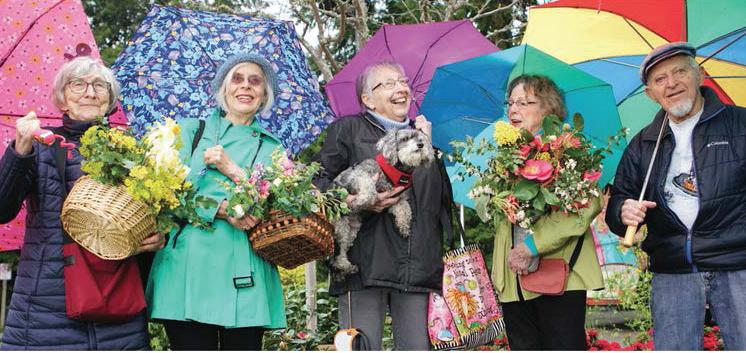

state whether a dog may enter or not. With walking trails through the woods, to the beach, and through town, Harley’s nose was on hyperdrive. She was never bored except once.
We went to the dog park at Seabrook and that was our only disappointment. A wolf pack can travel 20-30 miles a day and may travel as much as 100 miles in 24 hours. Granted their domesticated brethren are usually seriously overfed and overcoddled but if you have more than one dog in a space you need a lot of space. The space at Seabrook is the size of a backyard, more probably it is the size of one of the Seabrook lots. That’s too small for anything but a lap dog. It was not well maintained, and it looked abandoned.
If you are planning a trip somewhere and the dog park is a part of those plans, make sure that you spend time researching that park. Most of them can be Googled and if you can Google it, you can find its rating. To be fair to Seabrook, they have an entire seaside for dogs to experience, and Harley and I had the best time, enjoying the sand and water. The house we stayed at had an outdoor shower, an almost standard feature there and so Harley was able to get sand and salt water removed before her next adventure.
I learned when I took off my shoes sometime in our travels on the beach that the dry sand was seriously hot. I know there are shoes for dogs to protect their feet but I am trying hard to keep my dog from being dressed like a human even if she has toys and blankets to rival a toddler’s. We did not dawdle between the wet sand and the path off the beach.
If your dog is a water dog, it’s inevitable that they will drink salt water. Make sure that they have plenty of fresh water available to replace what they will lose due to the salt. This shouldn’t have to be mentioned but I will do so anyway, if you take your dog, take doggie bags. Thankfully Seabrook has plenty of trash cans and often the required doggie bags. Be kind to everyone else and use them.
Our first real adventure was a success even though Harley is a long way from being a trusted companion. We saw a deer, several squirrels, enjoyed the Gnome Trail because it smells like lots of little hands (I’m just assuming here), tasted a lot of flowers (again, a Harley only thing) and expanded my companion’s world without limiting mine too much. Having Harley go with me meant that I saw a familiar place with very different eyes. I cannot wait to see more of the world with Harley.
Smart Traveler’s Playbook: Safety, Savings, Packing, and Insider Tips for a Smoother Trip
By Mary Coupland
Traveling can be one of life’s greatest adventures, but it pays to be prepared. This guide provides practical advice for every stage of your trip—from booking flights and saving money, to staying safe and packing smart. Whether you’re a seasoned globetrotter or a first-time explorer, these tips will help you travel confidently and comfortably.
Booking Flights: Timing and Strategies
When it comes to booking flights, timing is key. For domestic flights within the U.S., the ideal window is usually 1–3 months in advance. For international travel, aim to book 2–6 months ahead. Contrary to popular belief, booking a year in advance doesn’t always guarantee the lowest price; airlines often release their best deals a bit later.
Use flexible date searches when booking. Flying midweek—especially on Tuesdays or Wednesdays—or at less popular hours can significantly reduce your ticket price. Price tracking tools like Google Flights, Hopper, and Skyscanner let you set alerts for fare drops, helping you snag the best deals.
Whenever possible, book directly with the airline. This makes it easier to resolve issues like delays or cancellations. Avoid traveling during holiday spikes such as Thanksgiving, Christmas, and Fourth of July, when prices are notoriously high.
Global Safety Tips
Prioritizing safety ensures a memorable, trouble-free trip. Always make copies of important documents like your passport, ID, and travel insurance, and store them in a separate bag or digitally in cloud storage. Use crossbody bags or money belts in crowded areas and refrain from displaying expensive items such as jewelry, luxury bags, or flashy electronics in unfamiliar places.
Stay vigilant and aware of your surroundings. Before traveling, check for any common scams or travel advisories related to your destination.
Essential Travel Do’s
• Learn basic phrases in the local language—“hello,” “thank you,” and “please” go a long way.
• Carry a small amount of local cash, as not every place accepts cards.
• Photograph your luggage before checking it, in case
you need to describe it to lost baggage claims.
• Bring a reusable water bottle to save money and reduce plastic waste.
• Pack a universal adapter when traveling abroad.
• Dress in layers during flights; airplane cabins can be cold or stuffy.
• Download offline maps (Google Maps) before your trip so you can navigate without data.
• Always carry a pen for unexpected immigration forms or paperwork.
• Pre-book airport transfers to avoid searching for a ride after a long flight.
• Take a photo of your parking spot if you’re leaving your car at the airport.
• Pack a mini “arrival kit” with a toothbrush, change of clothes, and phone charger in your carry-on, in case your checked bag is delayed.
• Use packing cubes to keep your suitcase organized and simplify security checks.
Travel Don’ts
• Don’t assume your cell phone will work everywhere— check roaming fees or consider getting an eSIM or local SIM card.
• Don’t overpack; excess baggage is harder to manage and costs more in fees.
• Don’t keep all your money and cards in one place— split them between bags and pockets.
• Avoid posting photos of your boarding pass on social media; hackers can scan it and access or change your booking. Your name, flight number, and travel dates are visible and can be misused to reset passwords or steal frequent flyer miles.
• Don’t broadcast your absence from home online, as this could make you a target for burglary or scams. If you want to share travel excitement, post generic photos like your suitcase, the airport lounge, or a wing shot from your seat instead of revealing personal details.
Final Thoughts
By following these tips, you’ll be equipped to handle the unexpected and enjoy your travels with confidence. Safe travels and make the most of your next adventure!
Safe travels and enjoy your next vacation.
The Importance of Connection and Non-Profits
By Bert Rinderle
There is power in connection, and one of the best ways to create connection is through non-profits.
I am new to the Executive Director role of Meals on Wheels Kitsap, but I am not new to non-profits. I’ve worked for them for most of my career, across three states, and at each of them, the same thing has been evident to me: people are part of non-profits because they want to be.
Non-profits provide vital services to the community, whether it’s through library programs, classes on maintaining mental health, or delivering food to the needy. These are just a few examples of how non-profits provide a positive impact on the community, one person at a time. In my experience, non-profits draw people who have a certain mentality and temperament: to provide help to those who need it.
Is there anything more basic and natural than providing assistance to someone? Helping one another goes beyond
borders, differences, and viewpoints. At some point, everyone needs help. Someone connects electricity to your home. Someone delivers and prepares food and products to stores. Someone invents something that makes things better.
There’s another level to this, however. Something deeper, and I’d say, even more basic and natural. Connecting with one another. We are social beings. It’s built into our DNA. Connection makes profound sense, as we literally cannot survive without each other. When we take the time to greet a stranger, to say “Thank You,”, or wave another motorist ahead, we are creating a connection. We are creating community.
Non-profits exemplify both levels. Not only do they provide vital goods and services, but they also provide vital human connection. They are an extension of the natural tendency to help each other.
I recently delivered meals to clients in Port Orchard. One of the clients was a 94-year-old woman who was so ill she could barely lift herself up from her chair. Her eyes glistened with emotion as she thanked us for bringing her meals, and she said, “If not for your kindness, and my cat’s, I would not be here.” It wasn’t hard to understand what she meant. Her cat, who sported the most enormous head I’ve ever seen on a cat, had sauntered over to us when we arrived and immediately and proudly displayed his fuzzy tummy for petting. Following this, he went right over to his human and curled up in her lap. We may have been the only people this client saw for the entire week; unfortunately, this kind of isolation is becoming more common as people age.
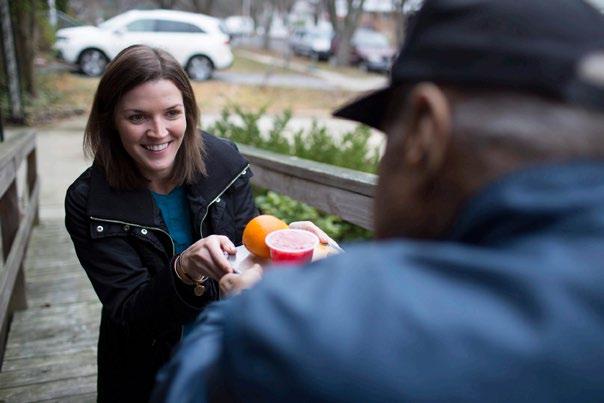

When I was with the library, we had a patron who shared that he was living in his car and using the branch’s public computers to find a job and housing and get his life back together. He was a regular presence every day, including weekends. One day he arrived distraught, weeping. We asked him what was wrong, and he told us, “I have a new job, and a place to live. I came to say thank you. It couldn’t have happened without the library, and all of you.”
These are just two examples of the kinds of bonds that are being created and strengthened across Kitsap County daily. There is a lot of need in our community, but there are also a lot of resources, staffed by deeply talented and dedicated people.
Every month, I am part of the Nourishing Network,
a gathering of non-profits from across the county. Facilitated by the caring folks of Bremerton Foodline, it’s an opportunity for like-minded organizations to come together and share their mission, how they’re doing it, what they offer others, and the challenges they’re facing in the process. The organic and positive connections that arise from these gatherings are powerful and enduring; during a recent meeting, I partnered with the Kitsap Humane Society to deliver pet food to our home delivered meal clients. The “Nourishing” aspect isn’t just foodrelated. There are representatives from Blue Bills, Kitsap Public Health District, Scarlet Road, Kitsap Regional Library, Olympic College, and Habitat for Humanity, to name just a few. When people with a common goal come together to mutually support each other and their communities, you can never tell the goodness that may result.
This extends beyond the Nourishing Network, too. I’ll be having a conversation with someone, for example, from Kitsap Community Foundation, the wonderful folks at Compass and Clock, or Kitsap Community Resources (with
whom Meals on Wheels partners with to create the food we deliver) and I’ll get a recommendation to reach out to a new organization or person, to potentially give or receive support. It shows how close-knit and committed Kitsap County is - all with the goal of improving each other, and ourselves.
It’s a common phrase that we’re better together. I’m hard pressed to think of a more relevant community demonstration of that than non-profits.
Bert Rinderle, Executive Director, Meals on Wheels Kitsap, 360-377-8511, www.mealsonwheelskitsap.org
Enhance Your Emotional Wellness To Develop a More Positive Mindset

Remember your good deeds. Give yourself credit for the good things you do for others each day.
Forgive yourself. Everyone makes mistakes. Learn from what went wrong, but don’t dwell on it.
Spend more time with your friends. Surround yourself with positive, healthy people.
Explore your beliefs about the meaning and purpose of life. ink about how to guide your life by the principles that are important to you.
Develop healthy physical habits. Healthy eating, physical activity, and regular sleep can improve your physical and mental health.
Mikhail Nilov

Am I Going Gray?
By Mary Coupland
How many out there are asking themselves this same question? — hair graying and aging is something nearly everyone wonders about at some point. Let’s see how science and trends play into this.
Does everyone go gray with age? Almost everyone will experience graying hair eventually, but the timing, extent, and pattern varies widely.
So why does hair turn gray? Hair turns gray because melanocytes (the cells that produce pigment in hair follicles) gradually stop producing melanin, the pigment that gives hair its color. Genetics is the biggest factor — if your parents went gray early, you’re more likely to as well. Aging naturally causes this slowdown in melanin production, often beginning in your 30s or 40s. Stress, diet, smoking, and health conditions and environment (like vitamin B12 deficiency or thyroid issues) can influence the graying.
Is gray hair more common in men or women? Graying happens to both genders, but men often show it earlier and more noticeably: Men tend to gray at the temples and beard first, and it’s often embraced or overlooked. Women may gray later and often dye their hair for personal, social, or professional reasons, so it may seem less common. That said, biology plays a role, but how society reacts is also key — women often face more pressure to conceal gray hair.
Is it cultural? Yes, culture heavily influences how people perceive and respond to gray hair. In many Western cultures, youth is idolized, so graying is often covered up, especially by women. In some Eastern cultures, gray hair is associated with wisdom and respect and may be more accepted.
In African and Black communities, hair texture and natural color maintenance can involve unique traditions and products (like henna, or protective styles to reduce stress on hair). In some Indigenous cultures, gray hair is embraced as a sign of elderhood and knowledge. What are people doing in the 21st century to maintain natural color and texture?
PREVENTATIVE & RESTORATIVE STRATEGIES
Nutritional support: B-vitamins (especially B12), copper, and antioxidants are essential for pigment production. Biotin, zinc, and omega-3s support healthy hair growth and texture.
Stress management: Chronic stress can impact melanin production. Practices like meditation, yoga, and therapy may slow graying.
Scalp health: Using natural oils (argan, coconut, rosemary) to nourish follicles.
Scalp massages to stimulate blood flow.
Gentle hair care routines:
Less heat styling, avoiding harsh chemical treatments, and sulfate-free products help preserve hair texture and color.
Cosmetic and natural approaches
Natural dyes: Henna, indigo, black walnut powder — especially popular among people avoiding chemicals.
Low-tox hair color: Ammonia-free or plant-based dyes are more widely available.
Gloss treatments: Keep hair looking vibrant and less dull, even with some grays.
Hair texture preservation:
Curly/coily-haired individuals often use protective styles (braids, twists).
Leave-in conditioners, curl creams, and less frequent washing help maintain moisture.
Embracing the gray: Many people — especially women in the last 10 years — are ditching the dye and proudly wearing their gray. Celebrities like Andie MacDowell and Helen Mirren helped normalize “silver hair pride.”
And let’s not forget, facial hair absolutely can go gray — but when, how, and who it happens to varies quite a bit. Here’s the full picture on facial hair and graying and what happens.
For men, their facial hair (beards, mustaches, sideburns) often goes gray earlier than scalp hair — or at least more noticeably. A common pattern is the first grays appear in the chin and mustache area, sometimes as early as late 20s or 30s. It may gray unevenly, with some men having saltand-pepper beards for decades before full gray. But why earlier? It’s because facial hair has different follicle types than scalp hair and may lose pigment faster. Also, since beards are often darker and coarser, grays stand out more.
Most women have finer, lighter facial hair, which makes graying less noticeable. Yet it still can gray particularly on the chin, upper lip, or sideburns — especially for postmenopausal women who develop more facial hair due to hormonal shifts. However, it often goes unnoticed unless the hair is darker or coarser — but women who
remove facial hair (e.g., waxing, tweezing) may notice the color change if they let it grow.
What determines when facial hair grays? Genetics, again, is key. Hormonal changes, especially in women during or after menopause, can lead to both more facial hair, and a shift in hair pigment (including graying). Health and lifestyle also play a role: stress, smoking, poor nutrition — same triggers as scalp hair graying.
Can you prevent facial hair from going gray? Not really — once melanin production slows, it’s largely irreversible. But you can slow the process (for both scalp and facial hair) with nutrients like B12, copper, folate, and antioxidants, Stress management and avoiding overuse of harsh facial skin treatments that may irritate follicles.
Gray hair is a natural part of aging for most people, but when, where, and how it shows up can be surprisingly varied — and yes, it’s not just about the hair on your head. As you've read above, many men now embrace silver or salt-and-pepper beards and for women, the conversation around natural aging is opening up, including how facial hair changes are managed or embraced.

What is Hoarding? Is it a Disorder or a Disease?
By Mary Coupland
Hoarding is a complex mental health condition, not just a bad habit or a matter of being messy. Let’s break this down to help you understand it better and provide you with the tools to help a loved one that might be a hoarder.
So, what is hoarding? Hoarding is the persistent difficulty in discarding or parting with possessions, regardless of their actual value. This results in clutter that disrupts living spaces and impairs quality of life, and at times can be hazardous. It’s more than just collecting—it’s often tied to intense emotional attachment or anxiety over discarding items.
Is hoarding a disorder or a disease? Hoarding is recognized as a mental health disorder. The official diagnosis is classified as ‘Hoarding Disorder’ in the Diagnostic and Statistical Manual of Mental Disorders (DSM-5).
It is not a disease like an infection, and it is not contagious, but it can have genetic, neurological, and psychological components.
Is it possible to catch someone experiencing hoarding symptoms early? Yes, there are early warning signs, especially in late teens or early adulthood, though it can emerge at any age. Some early signs include the following and early intervention can reduce long-term impacts.
• Growing piles of items (mail, clothing, containers) with no plan to sort or remove them.
• Anxiety or distress at the idea of throwing anything away
• Spaces (bed, counters, chairs) becoming unusable due to clutter.
• Procrastination, indecisiveness, or perfectionism around possessions
• Social withdrawal or embarrassment about the home or their room
How can you deal with someone who’s a hoarder? Good question. Dealing with a loved one who hoards can be emotionally draining and difficult. It’s important to
approach the situation with compassion and patience, not judgment. Here’s some ‘dos and don’ts’ to help you if there is someone that is exhibiting hoarding symptoms that you know or love:
Do’s
• Be patient and respectful and avoid shaming or forcing cleanup.
• Express concern about their safety and others in the home, not cleanliness.
• Offer to help but do not try to take control.
• Encourage baby steps, such as dealing with one item, corner, drawer, or closet at a time.
• Support professional therapy or medical help if they’re open to it.
Don’ts
• Avoid yelling, arguing, or discarding any items without their permission.
• Do not use ultimatums (unless there’s a legal or safety concern) with the hoarder.
• Do not just focus only on the “mess,” remember there are underlying emotional struggles taking place.
Seeking professional help is encouraged. A team approach often works best.
When helping someone with hoarding behavior it often takes a multidisciplinary approach, combining emotional, psychological, and practical support. Let’s take a look at the different types of professional help available.
There are three different types of Mental Health professionals that address the underlying emotional and cognitive issues behind hoarding.
Clinical Psychologist or Licensed Therapists: Specializing in hoarding disorder, obsessive-compulsive disorder (OCD), trauma, or anxiety, they use Cognitive Behavioral Therapy (CBT)particularly CBT for Hoarding. This technique helps with understanding why discarding is difficult for the
individual, builds decision-making skills for them, and helps them cope with the distress related to letting go of items.
Psychiatrist: a medical doctor who can diagnose and prescribe medication if needed. They may prescribe SSRIs (commonly used for OCD or anxiety), and often work in tandem with a psychologist or therapist for a holistic approach.
Social Workers: Clinical social workers can offer counseling and can help coordinate resources. They may visit the home to assess needs and advocate for support services, and they are particularly useful if elder care or housing safety is a concern.
Working in conjunction with mental health professionals are Professional Organizers who specialize in hoarding. These are hands-on experts who work directly in the home to declutter—with sensitivity and without judgment. When researching professional organizers in your area, look for those:
• Trained in hoarding behaviors
• Understand emotional attachment to items
• Go at a slow, more like a client-led pace
• Often collaborate with mental health therapists
Check if they are members of organizations like the Institute for Challenging Disorganization (ICD) or the National Association of Productivity and Organizing Professionals (NAPO).
Lastly, look to engage a specialty hoarding clean-up service. These are not just your typical cleaning company, their teams are trained in hoarding environments, safety protocols, and they often work with mental health providers. Some of the services they offer are biohazard and extreme cleaning expertise (if needed); disposal and donation coordination, compassionate, discreet services; and some may work with city/council codes or landlords if eviction is a concern.
You can also contact your local Council or Government Services, especially for seniors, people with disabilities, or those in social housing. They may provide:
• In-home assessments
• Home help or aged care referrals
• Safety interventions if there’s a fire hazard
• Case workers or access to Adult Protective Services if self-neglect is involved
And don’t forget peer support and community resources. Sometimes peer support is a crucial first step, especially for someone hesitant to accept help. Options could include Clutterers Anonymous (modeled after AA), online forums or support groups, and look for workshops or group CBT programs run by therapists or community health groups in your local area.
Where do you start? If you’re concerned for a loved one or yourself, the starting point could be contacting your General Practicioner or Primary Care Physician – to rule out any medical issues and they can refer the individual to therapy. You can also look for a licensed therapist with experience in hoarding, and another option would be to reach out to local mental health services or aged care agencies if there’s a safety concern, as these organizations may be able to provide local referral pathways that can help.
If you are concerned about someone with a hoarding disorder, don’t wait until it’s a crisis. Hoarding tends to worsen over time—earlier intervention equals better outcomes. And don’t forget to take care of yourself too. Supporting someone with a hoarding disorder can be emotionally exhausting. Set boundaries and seek support, because you matter too.



Sue-Marie Casagrande LICSW, C-ASWCM
Moving and Downsizing: The Do’s and Don’ts!
By Lisa Kemmerling
It now seems like a very long time ago that we moved from our beautiful home on Bainbridge Island, to another beautiful home in Nevada. Many years ago, my husband and I decided that we wanted to live in the desert when we retired. The pandemic pushed that move closer in and fortunately my business was mobile, and my husband’s Seattle company allowed work from home options. The sun, great weather most of the year and options to jump on an Alaska Airlines flight many times per day, expedited our move to the desert sooner.
We decided on a lovely development with all new homes going in and an elevation of 2,800 ft. While the home was under construction, we had to find temporary housing that lasted longer than 6 months. Here’s one of the don’ts: make sure you don’t sign a 1-year lease if you’re planning to move into a new construction. Rather than a long lease you’re better off going month to month since the builder can actually deliver on time or in our case delay delivery by 3 months due to supply chain issues.
The following is a list of other items to keep in mind if a move to another home out of state occurs in your future: 1) establish credit in the new state by getting your utilities in one or both names. Although, you may think “I have good credit and have plenty of credit worthy information on my credit history.” It’s vitally important to establish credit ASAP in the state in which you move. This was a surprise as we prepared for our move to Nevada. Once we decided on the apartment arrangements, the manager of said complex wanted tax documents proving that we could pay for our $1,800 per month apartment. Thinking that was an invasion of privacy and having not lived in an apartment for over 30+ years, we were told this was the norm.
Once you get the minor/major details out of the way like where you’re going to live, getting credit established in your new state, now comes the part of the actual move - ugh!! As a tried-and-true fashionista, figuring out what clothes to keep and what to donate became the allinclusive headache many people can relate to. Most men share the closet space with their partner, thus one or in some cases both may have to determine if they really think they’ll need all those wintery clothes from the PNW and
heavy jackets. 2) Donating clothing, jackets and perhaps household items such as kitchen utensils, and furnishings is important, so you don’t overspend on moving the items to your new home.
Hindsight being 20/20 I wished we had just sold all the heavy furniture and donated most of our kitchenware, towels, etc. to a local charity. The cost of moving items had gone up exponentially from our previous move from California to Bainbridge Island, and that’s including all the bridge tolls and extra Allied Van Lines charges. 3) Do your research on who you want to move your possessions to your new location. I cannot stress enough the value of how important it is to look at the reviews and ask for references to validate those reviews. Another unfortunate mishap was going with a large, well named outfit to move our items and store our big things, until the home was completed and ready to move in. 9 months later when our previous washer/dryer was delivered to our home, said movers threw damp towels in the dryer and much to our dismay we discovered that mildew ruined the dryer, after being in storage.
Immerse yourself in your new town, or neighborhood by meeting your neighbors as soon as you can. A wonderful experience occurred one day when we were visiting our new construction. The neighbors across the street (who had recently moved in) saw us and came over as we were standing outside looking at the property. Introductions happened and come to find out they were doctors who had relocated from California, and we all knew some of the same groups of friends.
Serendipitous moments can happen and if you allow yourself those opportunities, you may just form a longlasting friendship as we now have with these amazing people. 4) Look into your local meetup.com group. It’s rewarding and they offer groups of all ages and lifestyles. In the case of the group I joined, we have women from all over the world, many that we’ve had the pleasure of meeting are from the PNW. If this doesn’t appeal to you, then joining your local church or volunteering are also great ways to meet new friends. I hear this from so many people “I don’t want to start all over again meeting new people,” or “I’m just not that outgoing and don’t meet people easily.” I’m here to share that many of the people I’ve met since moving to Nevada are 5-15 years older than
me and have moved here from other states. Change is good, and it opens a myriad of opportunities. Embrace the uncertainty!
Finally, the journey is completed, and you’ve moved into your new home. Next comes the least favorite part of all our moves…….... the boxes upon boxes that need to be opened and put into their permanent resting places. The furniture’s been delivered, and you realize that maybe the couch, chair or table that looked good and fit your larger home no longer fits in your new space? It seems logical that you took your measurements and know your new home’s space. You may have even rid yourself of unwanted items; however, things still don’t fit, or the storage space is substantially smaller than the old house. What do you do?
5)Invite friends and family to come by, if they live in the area, to help with your downsizing. Offer them items you don’t want or can’t store. Check with your local charities, to see if they’ll pick up donations and schedule the
appointments immediately.
Moving can seem overwhelming and in many ways it is, however, I always keep my eye on the prize and that’s a new adventure that awaits us in the future. The friendships to be made, the restaurants to explore, the sports, golf, pickleball, bicycling and my newest craze Pilates, where surprisingly many men and women 50+ have joined these pursuits and are happy to meet a new face. Wherever your dreams take you, if that’s a new home in another state or just around the corner, to a new neighborhood, embrace the moments and realize that perhaps there’s other people that are new to the area as well and step forward to your next chapter.
Lisa Kemmerling is the owner of Clean Lines Fashion Consulting, helping both men & women find their current individual style, as well as their packing needs for travel. 925-518-4950 or lisa@cleanlinesfashion.com.






















C MPASS CL CK
Financial Planning Directory
Financial Advisors
Funeral & Pre-Planning
Cook Family Funeral Home & Cremation Services
(Please see our ad on page 8) 163 Wyatt Way NE
Bainbridge Island (206) 842-2642
https://www.cookfamilyfuneralhome.com/
(Please see our ad on page 10)
Serving Clallam & Je erson County (360) 633-7626
https://weknowmedicare.org/gary- oring/
(see our ad on page 49) Serving the United States and Canada (925) 719-2314 www.cleanlinesfashion.com
Kitsap County & Surrounding Area (206) 855-0855
(360) 779-1082 https://www.jcmadisoninc.com/
Professional Moving Services
Suseyi Pro Moving Company
Residential | Commercial
(see our ad on page 49)
Serving Kitsap, King and Surrounding Counties (206) 372-4619
www.kitsapmovers.com
Homestead Move & Estate Services
(see our ad on page 21)
Serving Pierce, Kitsap, and King Counties (253) 906-9696
www.homesteadmove.com
Real Estate Advising & Property Management
Sound Equity Investments, LLC
Serving Kitsap, King and Surrounding Counties
Real Estate, Construction & Contractors
Kummerow Design & Construction, Inc.
(see our ad on page 33)
Serving Bainbridge Island & the Surrounding Area
(206) 201-3602 www.kdcdesignbuild.com Clallam County
Brokers Group Real Estate Professionals
Sequim
Kitsap Seniors Real Estate-Teri Tennyson-Sterling Property Group Silverdale
Reverse Mortgages & Home Loans
Mutual of Omaha, Ted Butler
Lifestyle Home Loan Specialist, NMLS #71436
Ph: (425) 889-8989 | Cell: (425) 891-6644
Serving WA, CA, AZ, ID, OR https://mutualreverse.com/lo/ted-butler/
Kitsap County
Fairway Mortgage, Joan Qvigstad
Serving the Puget Sound Region
Cornerstone Home Lending Poulsbo
Longbridge Financial, Rebecca Rainsberger
Covering WA state (253) 509-2340
https://agents.longbridge- nancial.com/ rebecca-rainsberger
Health & Home Planning Directory
Adult Day Care
in Place
Air Medical Care Transport Services
Cancer Care
Clallam County King County Kitsap County
Olympic Medical Cancer Center
Sequim
Paragon Dermatology Sequim
Alzheimer’s Association
(Please see our ad on page 17)
WA State Chapter (800) 272-3900
https://www.alz.org/alzwa
American Cancer Society (800) 729-3880
American Lung Association (800) 586-4872
AWAKE - Apnea Support (360) 792-6686
Bereavement, Hospice Support Group (360) 415-6911
Brain Injury Support (360) 475-6480
Breast Cancer Support (360) 792-6885
Seattle Cancer Care Alliance
Caregiver Support
Kitsap Caregiver Support Center
9857 Silverdale Way, Suite 101, Silverdale
NK Fishline, 19705 Viking Ave NW, Poulsbo (360) 337-5700/(800) 562-6418
Diabetes Support (888) 342-2383
DriveAble (253) 851-0007
Hepatitis Support Person (360) 876-3837
Lung Club Support (360) 792-6686
National Alliance for the Mentally Ill (NAMI) (360) 377-2910
NK Breast Cancer Support Group (206)-842-6218
Ostomy Support Group (360) 692-3869
Ovarian Cancer Support Group (360) 697-6123
Parkinson’s Support Group (360) 475-6480
Rock Steady Boxing for Parkinson's (888) 217-0577
Self Help for Hard of Hearing People (SHHH) (360) 871-0997
Stroke Support Group (360) 337-8980
Care Managers, Clinical Social Workers & Geriatric Care Managers
Care Plans Plus
Serving the Olympic Peninsula
(see our ad on page 47) (360) 881-7900
https://www.careplansplus.com/
Alder Aging Support
Bainbridge Island Williams Care Management
Martha & Mary AT HOME
Serving Kitsap County
Peninsula Care Consultants Poulsbo
at Allyn
Bainbridge Island
Kitsap County
Kitsap County
Mason County
Certified Aging in Place & Senior Move Managers
Homestead Move & Estate Services
(see our ad on page 21)
Serving Pierce, Kitsap and King Counties (253) 906-9696
www.homesteadmove.com/
Clallam County
https://www.newseasonmove.com/ A Certi ed Aging in Place Specialist is a designation used to identify those individuals trained to help seniors and older adults live safely in their homes.
Kitsap County
Kitsap County
(Please
Certified Health & Wellness Coaching
& Massage
Health Care Providers (cont'd)
Clallam County
Dr. Kevin L Conroy, ND
Port Angeles
Dr. Paul Cunningham
Sequim
North Olympic Healthcare Network
Primary Care
Port Angeles
Olympic Medical Center
Port Angeles
Olympic Medical Heart Center
Port Angeles & Sequim
Olympic Medical Home Health (& Lifeline)
Port Angeles
OMP Primary Care
Port Angeles & Sequim
OMP Speciality Clinic
Port Angeles & Sequim
Kitsap County
Equilibrium Natural Health Silverdale
HousecallMD.org
Kitsap, Clallam, Je erson
Kaiser Permanente
Port Orchard, Poulsbo, & Silverdale
Kitsap Medical Group
Bremerton, Kingston, & Manchester
Home Health Care (Physician Ordered) & Nurse Delegation
Clallam County Kitsap County
Caregivers Home Health Inc.
Port Angeles, Sequim
Je erson County
Caregivers Home Health Inc
Port Townsend
Home Instead Senior Care
Serving Kitsap County, Key Peninsula & Gig Harbor
CenterWell Home Health
Serving Kitsap County and Surrounding Areas
e Personal Touch
Serving Kitsap and Surrounding Areas
Home Medical Equipment, Supplies & Accessories
Olympic Pharmacy & Healthcare
Services
(Please see our ad on page 21)
Serving Gig Harbor and surrounding areas
Available for mail orders
(253)858-9941
https://www.olympicpharmacy.com/
Clallam County
Bellevue HealthCare Sequim
Lincare Port Angeles
Olympic Oxygen Services Sequim
MobliWear
MobliWear is a Wearable Watch Fall Detection, Alerts, Monitoring, and Custom APP (888) 877-7564
https://mobliwear.com/
Kitsap County Nationwide
AdaptHealth Serving Western WA
Bellevue HealthCare Bremerton
Lincare Bremerton
Performance Home Medical Bremerton & Silverdale
Tim’s Home Medical Supplies Bremerton
NOBI Smart Lamp
Ensuring older adults can live more independently https://www.nobi.life/en
Hospice & Palliative Care
Assured Hospice
(Please see our ad on page 29)
Serving Je erson & Clallam Counties
Port Angeles (360) 582-3796
https://lhcgroup.com/locations/assuredhospice-of-port-angeles/
Kitsap & Pierce County
Virginia Mason Franciscan Health Hospice & Palliative Care Serving King, Kitsap & Pierce Counties
Je erson Healthcare Home Health & Hospice
2500 W Sims Way
Port Townsend (360) 385-0610
Shalom Hospice of Puget Sound 19352 Viking Way NW Poulsbo
https://shalomwa.com/
North Olympic Healthcare Network 240 W. Front St., A Port Angeles (360) 452-7891
MultiCare Hospice & Palliative Care Serving Kitsap & Pierce Counties
Hospitals & Clinics
Clallam County
Olympic Medical Physicians Walk-In Clinic 840 N. 5th Ave, Suite 1400 Sequim (360) 582-2930 Olympic Medical Physicians Walk-In Clinic 907 Georgiana St Port Angeles (360) 365-0550
Je erson County
Je erson Healthcare Medical Center & Emergency Dept 834 Sheridan Street Port Townsend (360) 385-2200
Je erson Healthcare Port Ludlow Clinic 89 Breaker Lane Port Ludlow (360) 437-5067
Je erson Healthcare South County Clinic 294846 US-101 Quilcene (360) 385-3991
Hospitals & Clinics (cont'd)
Kitsap County
CHI Franciscan Family Medicine Clinic
4207 Kitsap Way Bremerton (360) 782-5700
Franciscan Urgent Care 1344 Wintergreen Lane, Suite #100 Bainbridge Island (206) 201-0488
St. Anthony's Hospital 11567 Canterwood Blvd NW Gig Harbor (253) 530-2000
St. Michael Medical Center 1800 NW Myhre Rd. Silverdale (360) 337-8800
St. Michael Medical Center 2520 Cherry Ave Bremerton (360) 744-3911
Pierce County
US Naval Hospital 1 Boone Rd Bremerton (360) 475-4000
Virginia Mason Medical Center 1344 Wintergreen Lane NE Bainbridge Island (206) 842-5632
834
Imaging & Radiology
In-Home Care
Cerna
Serving CA, Dallas/Fort Worth TX, and Las Vegas NV
Coming to WA. soon (877) 577-6782
www.cernahc.com
Olympic Pharmacy & Healthcare Services
(Please see our ad on page 21)
Serving Gig Harbor & Surrounding Areas
Available for mail orders (253) 858-9941
https://www.olympicpharmacy.com/
Clallam County
Cost Co Pharmacy Sequim
Jim’s Pharmacy Port Angeles
Je erson County
Don’s Pharmacy Port Townsend
Tri-Area Pharmacy Port Hadlock
Pharmacies
Kitsap County
Cascade Specialty Pharmacy Poulsbo
Cost Co Pharmacy Silverdale
Costless Senior Services
Serving Clallam, Je erson, Kitsap, Mason & Pierce Counties
Pierce County
Cost Co Pharmacy Gig Harbor
Geneva Woods (delivery pharmacy)
Serving the WestSound Region
Rehabilitation (Physical, Occupational & Speech)
Je erson Healthcare Physical erapy & Rehabilitation
834 Sheridan St., Main Flr ESSB
Port Townsend (360) 385-2200, ext 1200
Clallam County
Olympic Medical Rehabilitation, Physical & Occupational erapy Port Angeles & Sequim
Je erson County
Peninsula Speech erapy Port Townsend
Kitsap
Bainbridge Island Health & Rehabilitation Center
Bainbridge Island
Bremerton Health & Rehabilitation Bremerton
Harbor Speech Pathology Port Orchard
Kitsap Physical erapy
7 Locations throughout Kitsap
Martha & Mary Health and Rehab Center Poulsbo
Kitsap (cont'd)
Northwoods Lodge Silverdale
Wade Zinn Physical erapy Poulsbo
Your Forever Home Serving Kitsap County & Surrounding Areas
Pierce County
Harbor Speech Pathology & Driveable (Cognitive drivers assessments) Gig Harbor
Senior Nutrition Centers & Food Banks
Meals on Wheels-Kitsap
(Please see our ads on page 42)
Serving Kitsap County (360) 377-8511 / (888) 877-8511
Meals on Wheels Kitsap has been the major provider of nutrition services for elderly persons aged 60 years and older in Kitsap County since 1973. eir target population are frail, lowincome elderly persons who depend on well-balanced meals for their primary source of nutrition, as food is a basic need.
http://www.mealsonwheelskitsap.org/
Senior Nutrition Centers & Food Banks (cont'd)
Clallam County
Sequim Food bank 144 W. Alder St (360) 683-1205
Port Angeles Food Bank 402 S. Valley St. (360) 452-8568
Helpline House Food Bank (Bainbridge) 282 Knechtel Way NE (206) 842-7621
North Kitsap Fishline (Poulsbo) 19705 Viking Ave NW (360) 779-5190
Share Net Food Bank 26061 United Rd NE (360) 297-2266
Serving Eglon, Hansville, Kingston, Suquamish
South Kitsap Helpline (Port Orchard) 1012 Mitchell Ave (360) 876-4089
Tri Area Food Bank 760 Chimacum Rd Chimacum (360) 385-9462
Brinnon Food Bank 151 Corey St (360) 796-4444
Quilcene Food Bank 29452 US-101 (360) 785-0904
Bremerton Food
12th St (360) 479-6188
Central Kitsap Food Bank (Silverdale) 3537 NW Anderson Hill Rd (360) 692-9818
Skilled Nursing & Rehabilitation
Specialists
Types of Independent Living Residences:
Homes Studios Apartments Cottages CCRCs
Independent living o ers a vibrant lifestyle with social connections, maintenance-free living, and access to supportive services.
• On-site dining
• Shared outdoor spaces
• Friendly & professional sta
• Vibrant community setting
• Events and activities to promote physical activity, cognitive skills, creative expression and lifelong learning

The average cost of senior living varies based on location, amenities, and services but can run between $1500 and $10,000 per month. The national median for 2025 is $3,145.
Housing Communities
CLALLAM COUNTY
(Care
408 W. Washington St
(360) 207-4896
(Northwest Care Senior Living) 651 Garry Oak Drive
(360) 582-9309
Housing Communities
JEFFERSON COUNTY
SAN JUAN VILLA (Caring Places)
112 Castellano Way PORT TOWNSEND (360) 344-3114
Avamere at Port Townsend PORT TOWNSEND
Victoria Place PORT TOWNSEND
KITSAP COUNTY
THE ARBOR ASSISTED LIVING
(Care Partners Senior Living) 3500 9th St
BREMERTON (360) 479-4130
THE ARBOR MEMORY CARE
(Care Partners Senior Living) 3510 9th St.
BREMERTON (360) 525-9000
LIBERTY SHORES SENIOR LIVING
(Northwest Care Senior Living) 19360 Viking Way NW POULSBO (360) 779-5533
MADISON AVE HOUSE
(Bainbridge Senior Living) 285 Madison Ave S BAINBRIDGE ISLAND (206) 842-3694
MADRONA HOUSE
(Bainbridge Senior Living) 8800 Madison Ave N. BAINBRIDGE ISLAND (206) 317-6000
Housing Communities
KITSAP COUNTY
VINEYARD PARK OF BREMERTON
(Care Partners Senior Living) 2707 Clare Ave BREMERTON (562) 232-2695
VINEYARD PARK OF PORT ORCHARD
(Care Partners Senior Living) 1761 Pottery Ave. PORT ORCHARD (360) 874-1212
(Bainbridge Senior Living) 234 Wood Ave SW BAINBRIDGE
(206) 842-3694
(Bainbridge Senior Living) 186 Wyatt Way NW BAINBRIDGE
(208) 780-3646
Housing Communities
KITSAP COUNTY
Housing Communities
KING COUNTY
ROSEWOOD COURTE
MEMORY CARE
(Northwest Care Senior Living) 728 Edmonds Way
EDMONDS (425) 673-2875
FAIRFIELD - 14 Locations
I-5 Corridor
OLYMPIA TO BELLINGHAM (858) 457-2123
https://www.fair eldresidential. com/
MASON COUNTY
Haven In Allyn
PIERCE COUNTY
Family
Gig Harbor Court (Pegasus
Key & Penrose Harbor
Certi
Legal Planning Directory
Certified Professional Guardian
Clallam County
Bridge Builders Sequim
Heidi
Sherrard McGonagle Tizzano & Lind 19717 Front Street NE
Poulsbo (360) 779-5551
https://www.sherrardlaw.com/
Hayes Gori, PLLC
Richmond
https://www.sherrardlaw.com/
Personal
Colleen
Sherrard
240 Madison Ave North
Bainbridge Island (206) 842-5681
https://www.sherrardlaw.com/
Madison Ave North
Island (206) 842-5681
https://www.sherrardlaw.com/
Leisure and Family Support Directory
Athletic Clubs & Senior Fitness Program
Clallam County
Olympic Peninsula YMCA
Port Angeles & Sequim
County
Port Townsend Athletic Club
Olympic
YMCA
Bainbridge Athletic Club Bainbridge Island
YMCA
&
Haselwood Family YMCA
Casinos, Resorts & Lodging, Golf & Country Clubs
Clallam County
7 Cedars Casino & Resorts
Sequim
e Cedars at Dungeness Golf Course
Sequim
Sunland Golf & Country Club
Clearwater Casino & Resort Suquamish
Meadowmeer Golf & Country Club
Bainbridge Island
Sequim McCormick Woods Golf Club Port Orchard
Elwha River Casino
Port Angeles e Point Casino
George Washington Inn
Port Angeles
Canterwood
End of Life Planning and Legacy Planning
Johanna Munson, Peace of Mind Guide
Available Nationwide
Shows and Entertainment. Find who’s playing in your neighborhood and embrace the local and national artists this year.
https://www.olympicjazz.com/ https://jffa.org/festival/ https://www.olympictheatrearts.org/ https://www.porttownsendvineyards.com/ https://7cedars.com/events/ https://littlecreek.com/event-center/
https://www.thepointcasinoandhotel.com/entertainment/ https://www.clearwatercasino.com/whats-happening/ https://www.admiraltheatre.org/ https://www.roxybremerton.org/ https://www.bremertonwestsoundsymphony.org/ https://www.narrowsmusicsociety.org/ https://www.facebook.com/groups/132224656953154 https://biparks.org/special-events/ https://www.biartmuseum.org/calendar-events/
Entertainment & Travel
Sequim-Dungeness Valley Chamber of Commerce, and Visitor Center
1192 E Washington St, Sequim (360) 683-6197
www.sequimchamber.com
Clallam County
Cruise Planners
Your Land & Cruise Experts
Serving Clallam, Je erson, King, Kitsap, Mason & Pierce Counties
North Olympic Library System (NOLS)
Forks, Port Angeles, Sequim & Clallam Bay Branch
Olympic eatre Arts Sequim
Pedego Electric Bikes Sequim
Port Angeles Community Players
Port Angeles
Port Angeles Symphony Port Angeles
Bainbridge Island Senior Center
370 Brien Ave, SE
Bainbridge Island (206) 842-1616
Bremerton Senior Center 1140 Nipsic Ave
Bremerton (360) 478-5357
Gig Harbor Senior Center 6509 38th Ave NW
Gig Harbor (253) 514-6338 ex 107
Givens Senior Center 1026 Sidney Ave
Port Orchard (360) 337-5743
e HUB
111 NE Old Belfair Hwy Belfair (360) 275-0535
KSQM FM 91.5 www.ksqmfm.com
Sequim (360) 681-0000
Sequim Wheelers Sequim
Je erson County
erson County Library Port Hadlock & Book Mobile
Key City Public eatre Port Townsend
Kitsap County
BIMA (Bainbridge Island Museum of Art)
Bainbridge Island
Songwriting Works Port Townsend
Port Ludlow Marina Port Ludlow
erson County
BPA (Bainbridge Performing Arts)
Bainbridge Island
Clipper Vacations
Seattle
Kitsap Regional Library
Bainbridge, Bremerton, Kingston, Little Boston, Manchester, Port Orchard, Poulsbo, Silverdale, Sylvan Way
BIMA (Bainbridge Island Museum of Art)
Bainbridge island
Senior Centers
Key Peninsula Comm. Svs. 17015 9th St. KPN Lakebay (253) 884-4440
North Kitsap Sr. Citizens Ctr. 18972 Front St. NE Poulsbo (360) 779-5702
Port Angeles Senior Center 328 E 7th Street Port Angeles (360) 457-7004
Port Gamble S’Kallam Sr. Ctr. Little Boston Road Kingston (360) 297-4858
Port Townsend Senior Center 620 Tyler St. Port Townsend (360) 385-9007
Quilcene Community Center 294952 US-101 Quilcene (360) 765-3321
Shipley Center 921 E Hammond St Sequim (360) 683-6806
Tri-Area Community Center 10 W Valley Rd. Chimacum (360) 732-4822
Village Green Community Center 26159 Dulay Rd NE Kingston (360) 297-1263
Admiral eatre Bremerton
Bainbridge Island Pickleball http://bipickleball.org
Bremerton Parks & RecreationPickleball (360)473-5427
Cabin Fever Quilt Club http://cabinfeverquilters.org/
Kitsap Computing Seniors (360)297-2485
Kitsap Senior Singles (360)373-8742
Kitsap Quilters https://kitsapquilters.com/
Senior Groups
North Mason Senior Club (360)275-6246
Over the Hill Hikers ( 815)677-3903
Port Angeles Garden Club http://www.portangelesgardenclub.org/ gardenresources. html
Puget Sound Senior Citizens Club (360)674-2159/ (360) 377-5905
Sequim Picklers www.sequimpicklers.net
Sequim Prairie Garden Club http://www.sequimprairiegardenclub.org/
Sequim Senior So ball (360)681-2587
Sunbonnet Sue Quilt Club https://www.sunbonnetsuequiltclub.org/
Trek, Active Senior Excursions (253)851-8450
West Sound Cycling Club https://www.facebook.com/groups/53775536887/ about/
West Sound Quilters http://www.westsoundquilters.org/
Senior Information, Assistance, Referral & Ombudsman
Clallam County
Olympic Area on Aging 609 W. Washington St. Ste 16 Sequim (360)452-3221
Je erson County
Clallam & Je erson County Long Term Care Ombudsman (360)417-8556
Dove House Advocacy Services Port Townsend (360)385-5291
Olympic Area on Aging 2500 W. Sims Way, Suite 300 Port Townsend (360)385-2552
Olympic Area on Aging 11700 Rhody Drive Port Hadlock (360)379-5064
Kitsap Senior Information & Assistance 9857 Silverdale Way, Suite 101 Silverdale (360)337-5700
Adult Protective Services for the WestSound Region 1-877-734-6277
Kitsap County Pierce County
Dementia Specialist-Denise Hughes (360)337-5700 /(800) 562-6418 Kitsap County Senior Information & Assistance
Kitsap County Long Term Care Ombudsman (360)337-5714 / (800) 562-6418
Pierce County Long Term Care Ombudsman (253)798-3789
Technology (Websites, Social Media, and More)
Amber Wheeler, Marketing Maven Port Angeles, Serving Western WA
Transportation (Public and Private) & Car Dealerships (Retail)
Around the Sound
Kitsap County & Olympic Peninsula (360)874-0055/(253) 858-7088
Clallam Para Transit (360)451-4511, option 1
Haselwood Auto Group West Hills Auto Plex, Bremerton www.westhillsautoplex.com
Je erson County Human Services
Elderly/Disabled Van 10 local communities (360)674-8104
Kitsap Access (800)501-7433
e Personal Touch
Serving Kitsap, Je erson, Pierce & Mason Counties (360)895-3980
Paci c Creative Studios
AMVETS
5717 South Tyler Street Tacoma (253) 472-2552
5717 South Tyler Street Tacoma (253) 472-2552
Federal Way Vet Center 32020 32nd Ave South Suite 110 Federal Way (253) 838-3090
Federal Way Vet Center 32020 32nd Ave South Suite 110 Federal Way (253) 838-3090
Homeless Veterans Reintegration Project Puget Sound Region (800) 562-2308
Homeless Veterans Reintegration Project Puget Sound Region (800)562-2308
Clallam County
Olympic eatre Arts
Clallam County
Veterans Benefits
Veterans Benefits
Tahoma National Cemetery 18600 Southeast 240th St. Kent (425)413-9614
Tahoma National Cemetery 18600 Southeast 240th St. Kent (425) 413-9614
American Academy of Bene t Planners, Aaron Steele Serving the WestSound (360) 464-2979
American Academy of Bene t Planners, Aaron Steele Serving the WestSound (360) 464-2979
Veterans of Foreign Wars 416 Burnett Ave S. Renton (425) 255-9010
Veterans of Foreign Wars 416 Burnett Ave S. Renton (425) 255-9010
Veterans Estate Management Program Puget Sound Region (800) 562-2308
Veterans Estate Management Program Puget Sound Region (800)562-2308
WA Department of Veterans A airs (800) 562-0132
WA Department of Veterans A airs (800)562-0132
WA Veterans Home Retsil 1141 Beach Dr. E. Port Orchard (360) 895-4700 (877) 838-7787
WA Veterans Home Retsil 1141 Beach Dr. E. Port Orchard (360) 895-4700 (877) 838-7787
Volunteers & Resources
Volunteers & Resources
https://olympictheatrearts.org/OTA/?page_ id=559
Olympic eatre Arts https://olympictheatrearts.org/OTA/?page_ id=559
RSVP, e Retired & Seniors Volunteer Program (360) 452-4726
RSVP, e Retired & Seniors Volunteer Program (360) 452-4726
Serenity Acres Horse Rescue
https://wagsequimwa.com/
WAG (Welfare for Animals Guild) https://wagsequimwa.com/
Kitsap County
Kitsap County
Abraham's House Charity (360)405-0488 https://abrahamshouse.net/
Abraham's House Charity (360) 405-0488
Serenity Acres Horse Rescue Island Volunteer Caregivers (206) 842-4441 www.ivcbainbridge.org
https://abrahamshouse.net/
Island Volunteer Caregivers (206)842-4441
www.ivcbainbridge.org
Sequim Beautiful Day
https://sequimbeautifulday.org
Sequim Beautiful Day
https://sequimbeautifulday.org
Je erson County
RSVP, e Retired & Seniors Volunteer Program (360)385-2571
Je erson County
RSVP, e Retired & Seniors Volunteer Program (360)385-2571
Kitsap County Volunteer Services
https://www.kitsapgov.com/BOC_p/Pages/ Volunteer-Current-Opps.aspx
Kitsap County Volunteer Services
https://www.kitsapgov.com/BOC_p/Pages/ Volunteer-Current-Opps.aspx

Meals on Wheels Kitsap tp://www.mealsonwheelskits
Senior Companion Program (253)272-8433/(800) 335-8433
Meals on Wheels Kitsap http://www.mealsonwheelskitsap.org/
Senior Companion Program (253)272-8433/(800) 335-8433
http://www.lcsnw.org/tacoma/SeniorCompanion. html
http://www.lcsnw.org/tacoma/SeniorCompanion. html
Pierce County
Pierce County
RSVP, Retired & Senior Volunteer Program
https://lcsnw.org/program/retiredseniorvolunteerprogram-rsvp/
RSVP, Retired & Senior Volunteer Program
https://lcsnw.org/program/retiredseniorvolunteerprogram-rsvp/
Senior Companion Program (253) 272-8433/(800) 335-8433 http://www.lcsnw.org/tacoma/SeniorCompanion. html
Senior Companion Program (253)272-8433/(800) 335-8433
Volunteer Services Southwest https://ccsww.org/volunteer/
http://www.lcsnw.org/tacoma/SeniorCompanion. html
Volunteer Services Southwest https://ccsww.org/volunteer/
Online Dating Sites
Silver Singles-Simple to use
OurTime-Ideal for singles 50 and over Match-Over 1.9 million users
eharmony-More than 10 million active users EliteSingles-Ideal for sophisticated daters.



Lisa Kemmerling Clean Lines Fashion Consulting
Helping you find your unique personal style 925-719-2314

Mary Coupland
Compass & Clock Owner / Founder In memory of my mom
Colleen Cudd
Assured Hospice of Clallam and Je erson Counties Volunteer Manager
360-582-3796
Olympic Pharmacy and Healthcare
Serving Western WA communities since 1960 with medical equipment, supplies and prescriptions. 253-858-9941
Robin Clausen Homestead Move & Estate Services
It’s more than moving....it’s making it home! 253-906-9696




